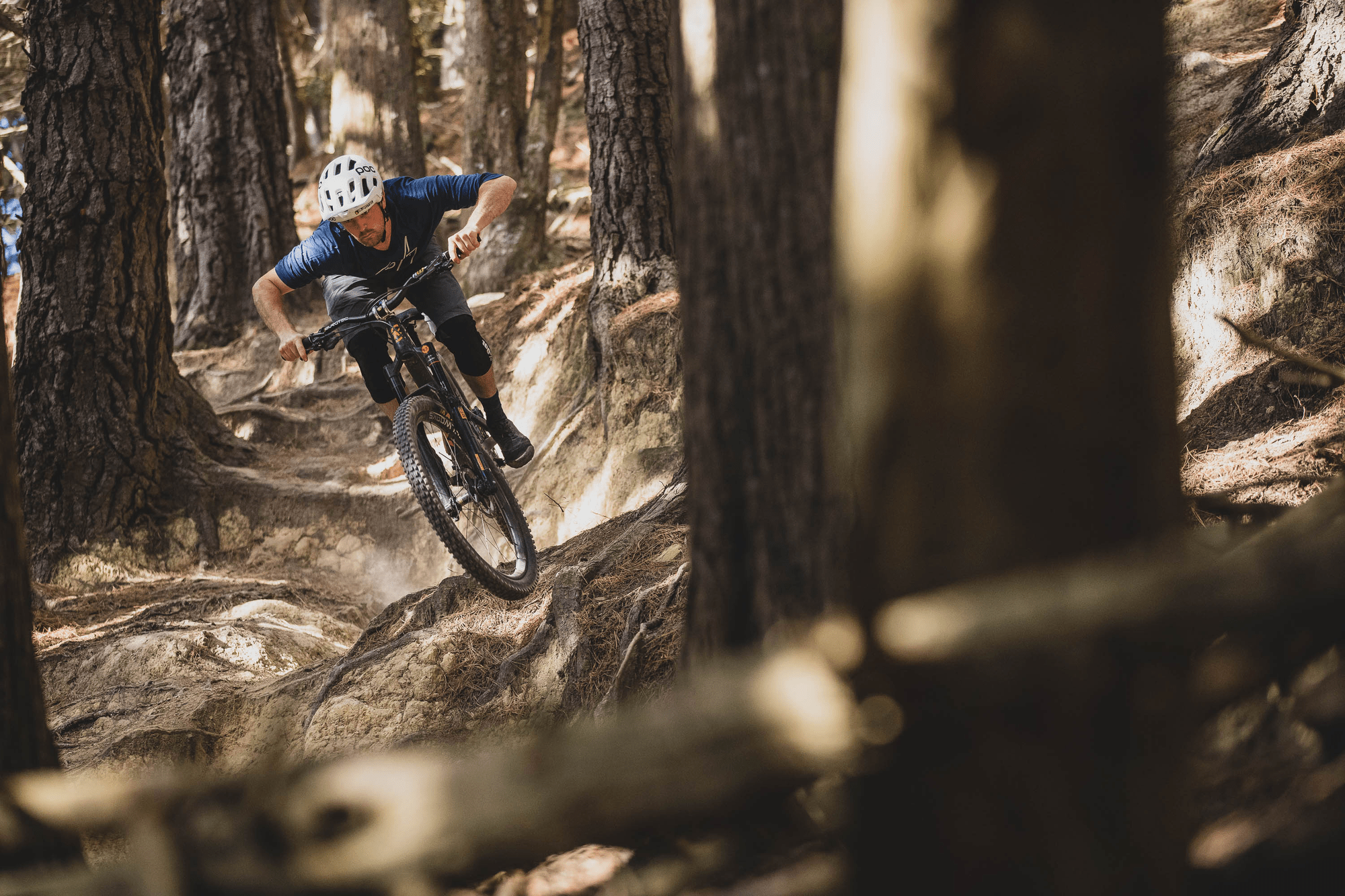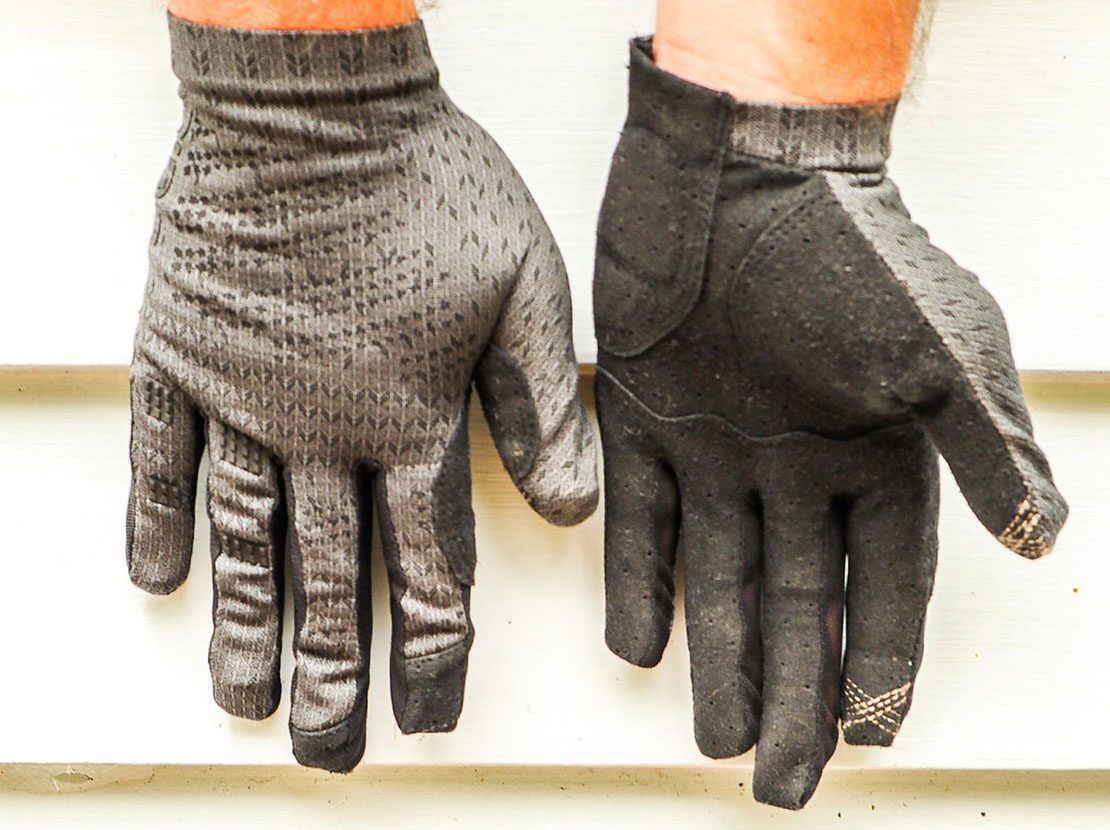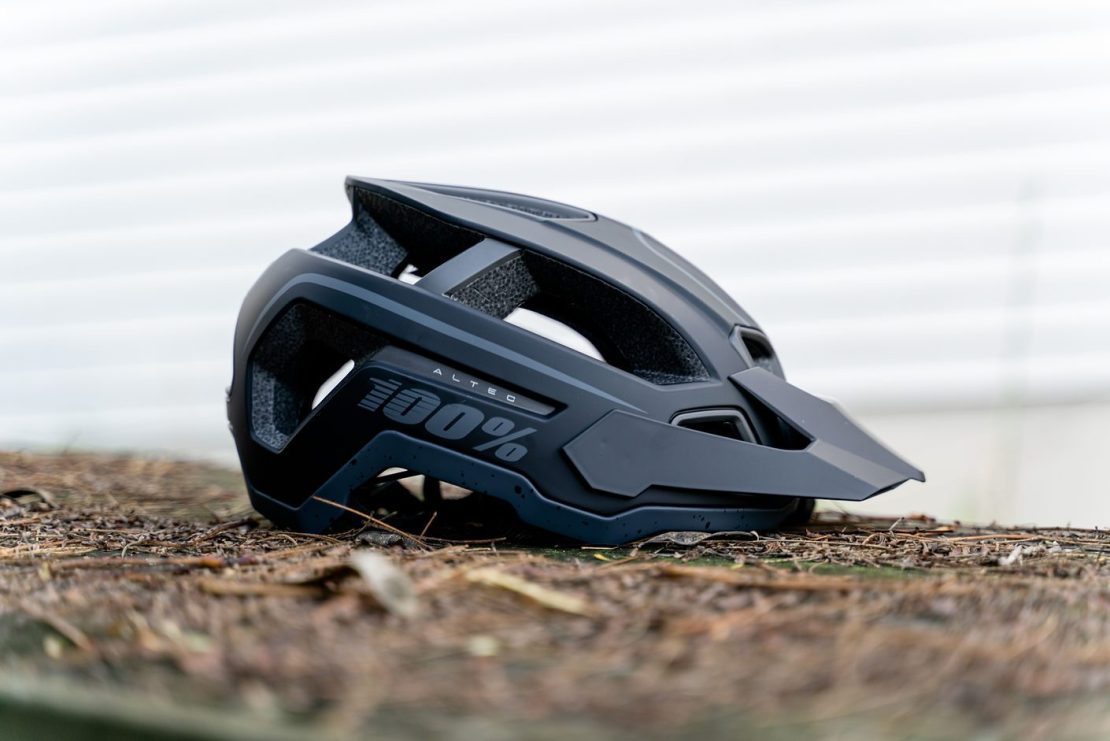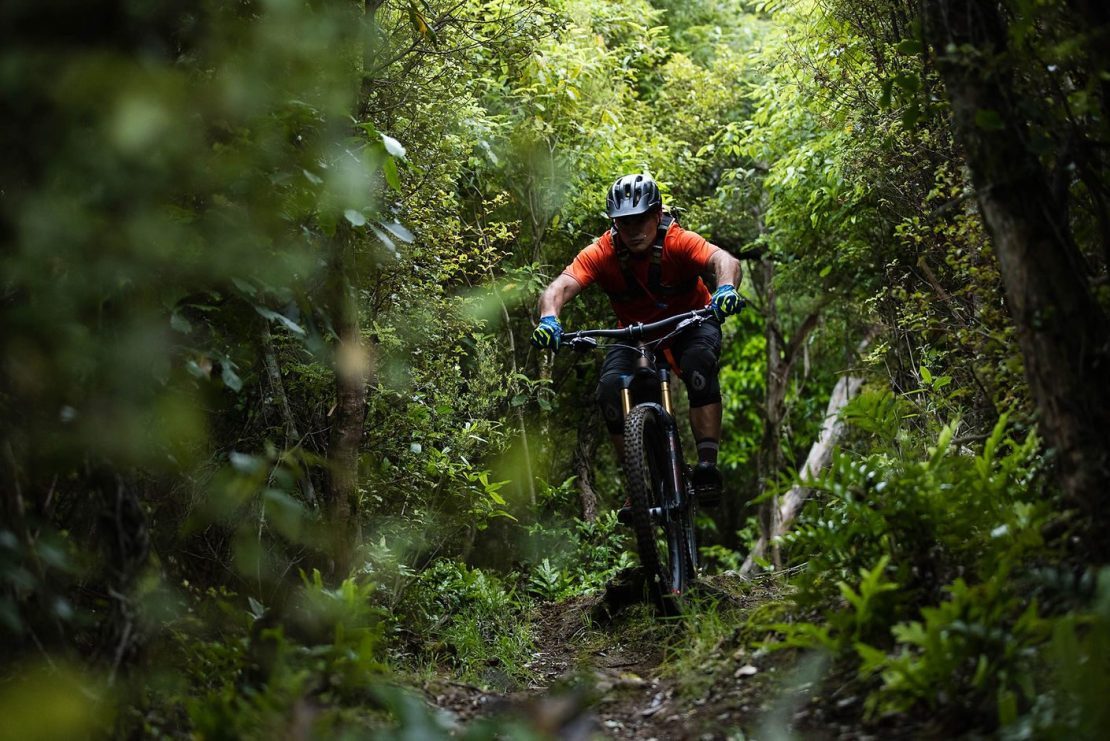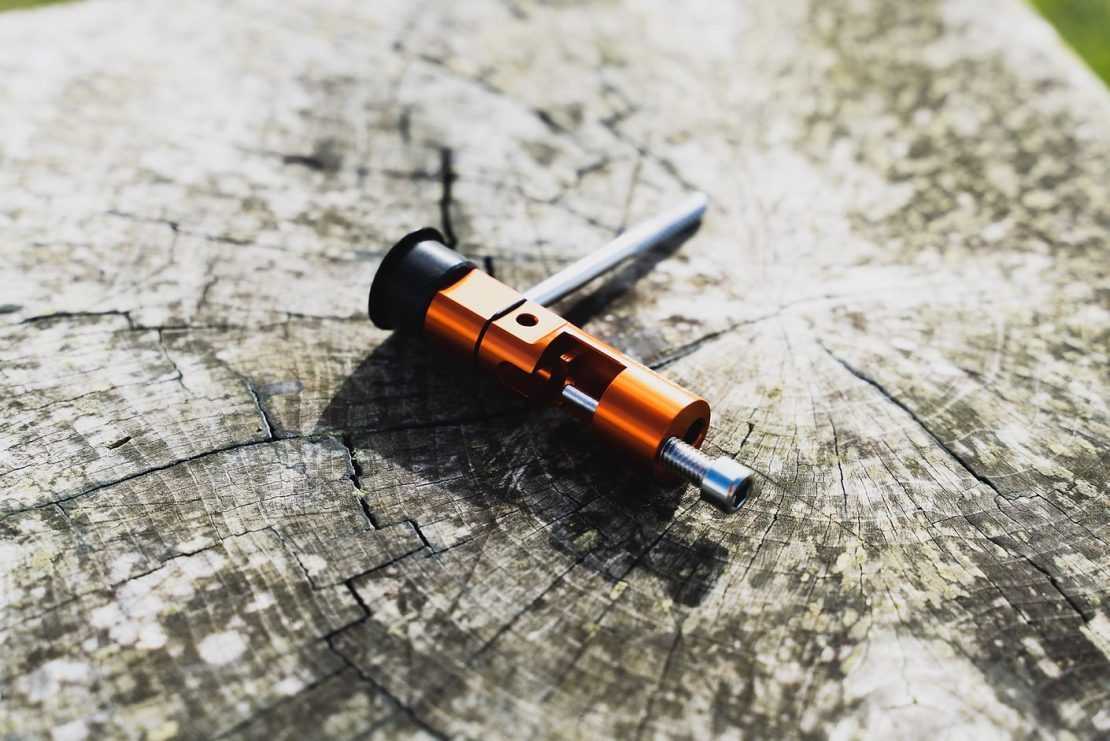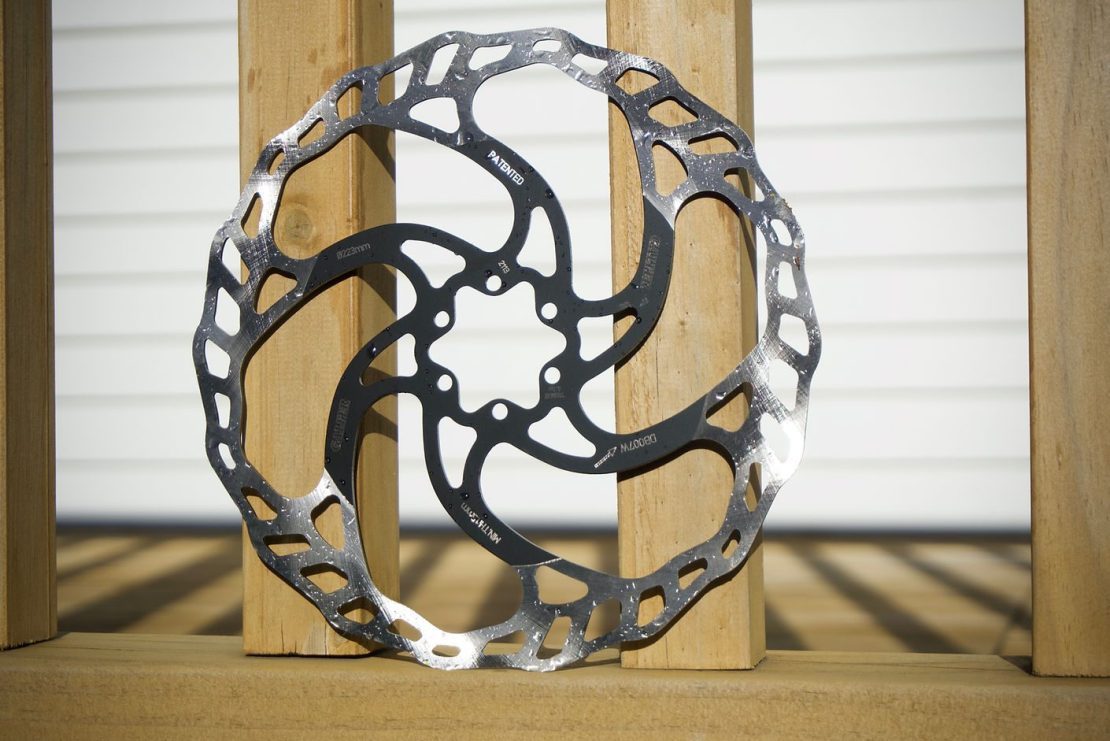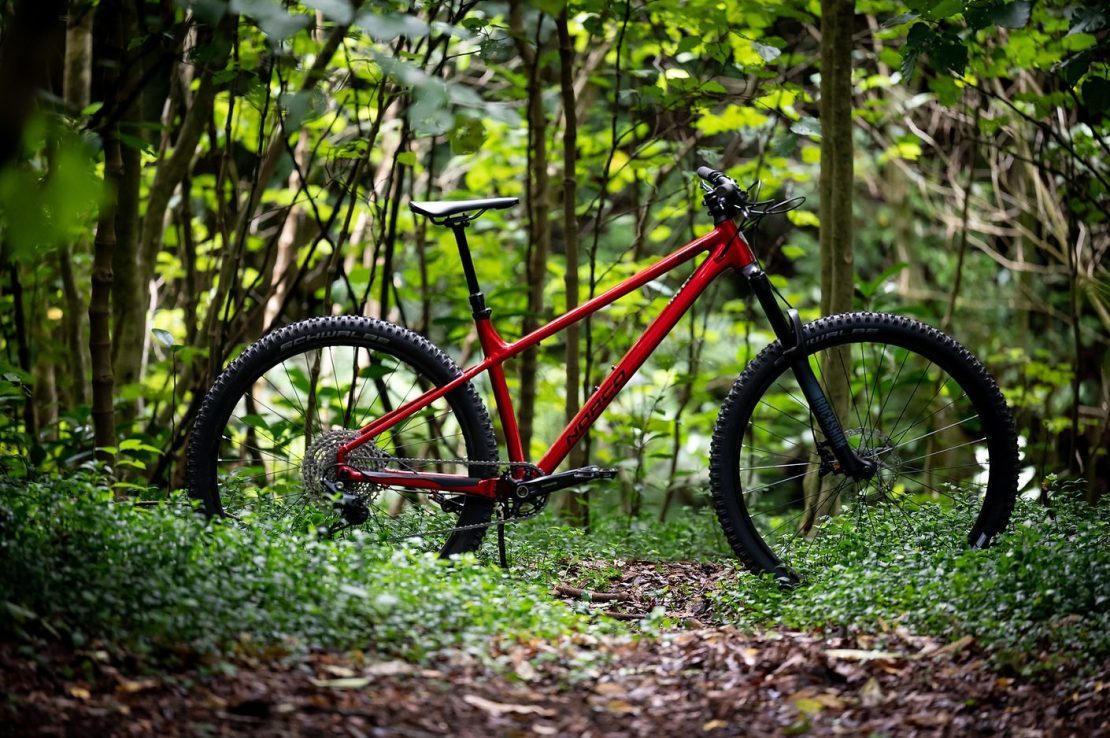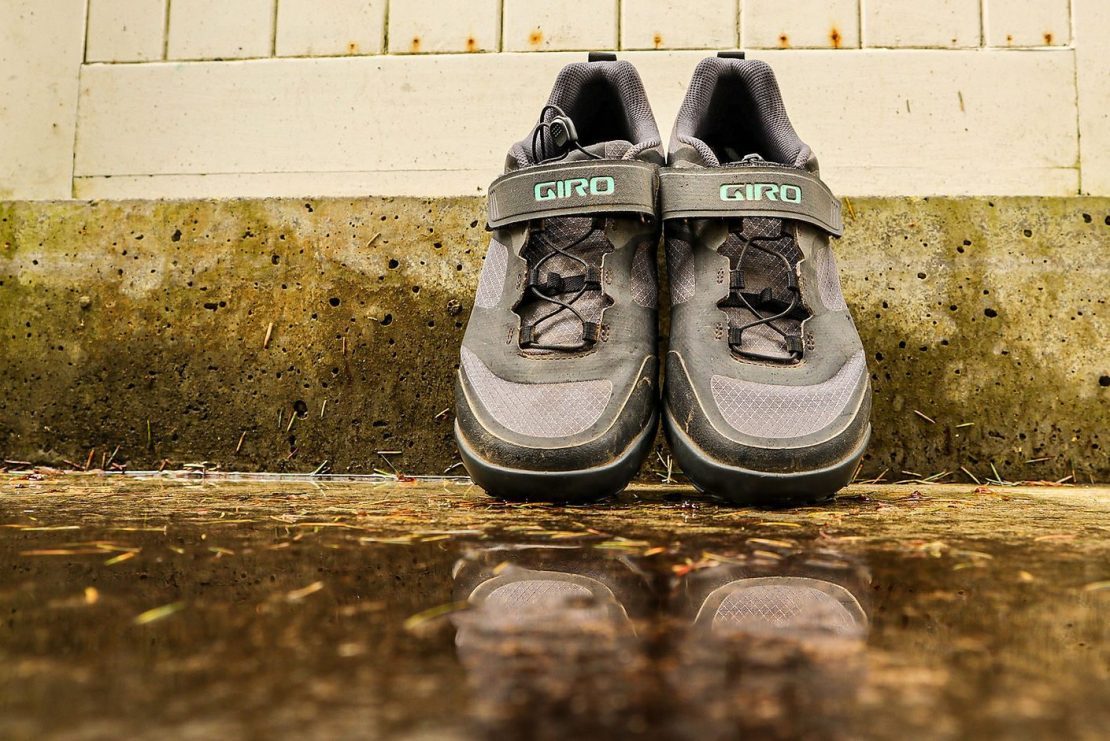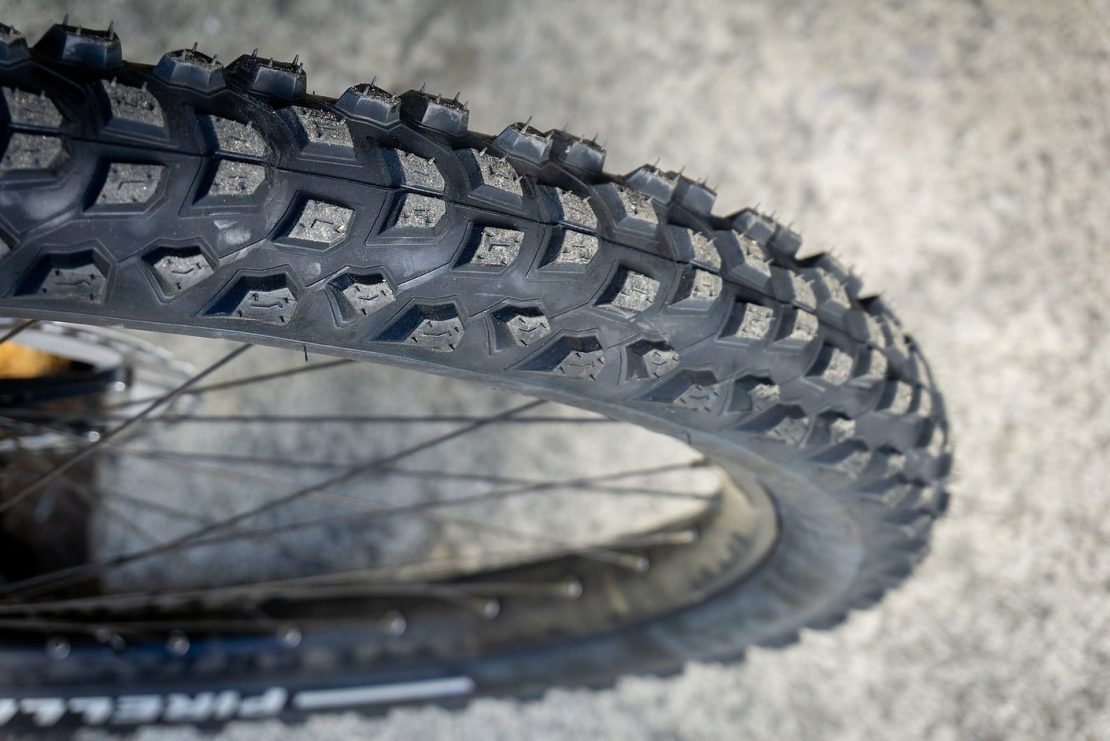Review: 100% Teratec Plus Knee Guard
Knees pads are a hard thing to get right. I’ve ridden with some great ones over the years… and some really, really bad ones that I thought would have been good. It’s hard to tell how good they’re going to be until you take a tumble. Personally, I feel naked if I don’t ride with knee pads on. My confidence just isn't there and I know that one bad crash could mean f$cked knees for the rest of my life (and knee surgery looks like a total ball ache). I’ve been close to this a couple of times.
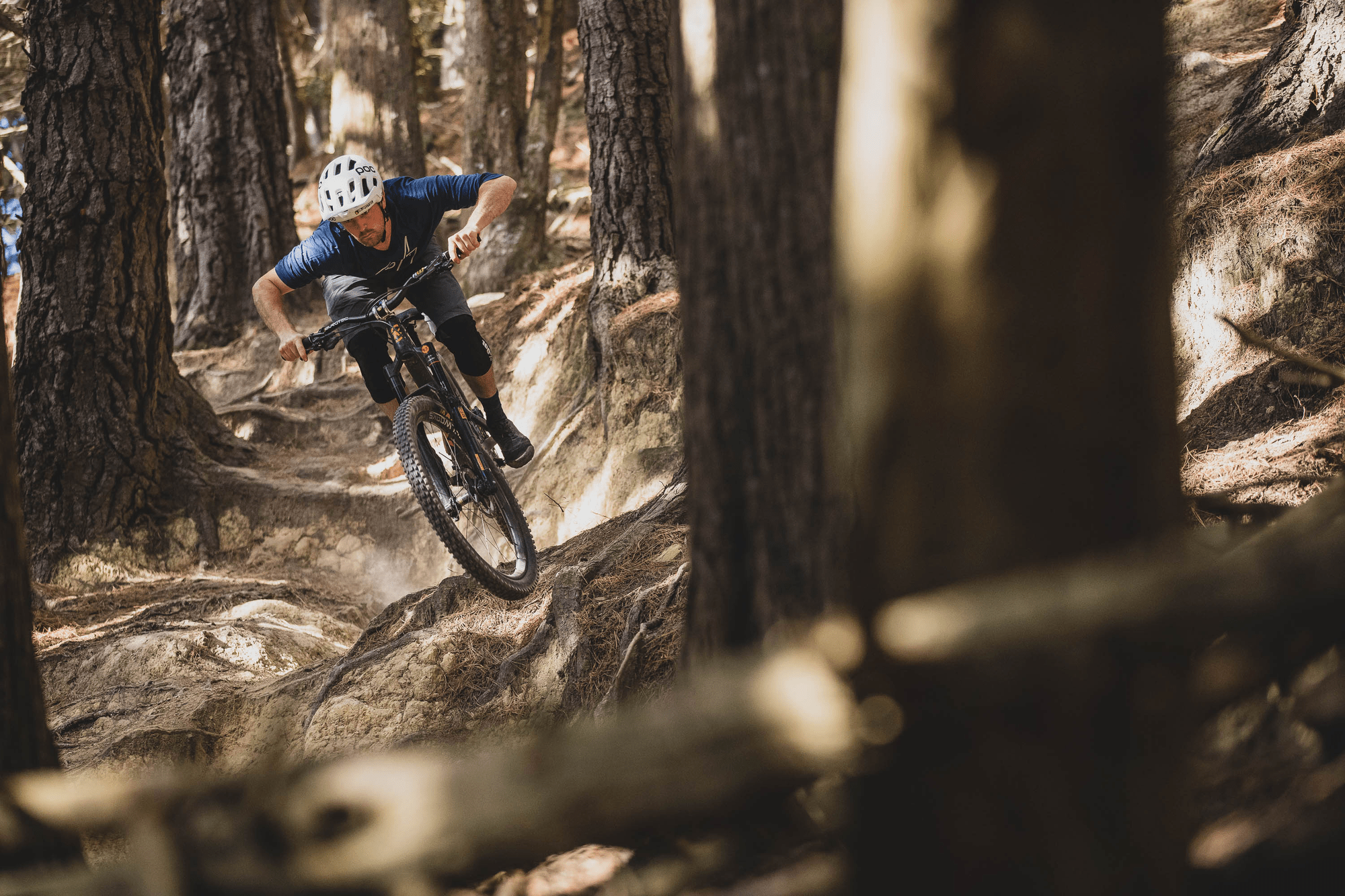
One of my biggest pet peeves is knee pads that slip down during a crash. There is nothing worse than buying a new set of knee pads you're stoked on, only for them to slip down your leg during a tumble, doing nothing to protect your knee. It's the worst. So, where does the 100% Teratec plus come in? Well, with a massive silicone webbing covering the inside cuffs on the top and bottom of the pad, these pads stay in place even after the biggest rags. The Teratec Plus work on a tight fit versus straps. This style of tight fitting pad can be hard to put on sometimes, but 100% have been smart and added a small hand pocket/handle for helping you pull the pads up. On top of the small pocket, and around the guard itself, is a thin layer of padding which just adds a little extra protection.
I’ve been using the Teratec Plus as my daily pads for the last few months. They have been on all sorts of adventures and rides, from big hike-a-bike days in the back country to quick loops of my local trails in all sorts of different weather: wet, dry, hot or cold. I went for the medium size as it's the size I normally choose when going for knee pads. Over the first couple of rides they felt a bit tight - the big silicone cuffs caused a bit of uncomfortable friction on my lower thighs. After a few rides, though, they stretched out slightly and the friction disappeared. This seems to be a common theme with compression-fit pads.
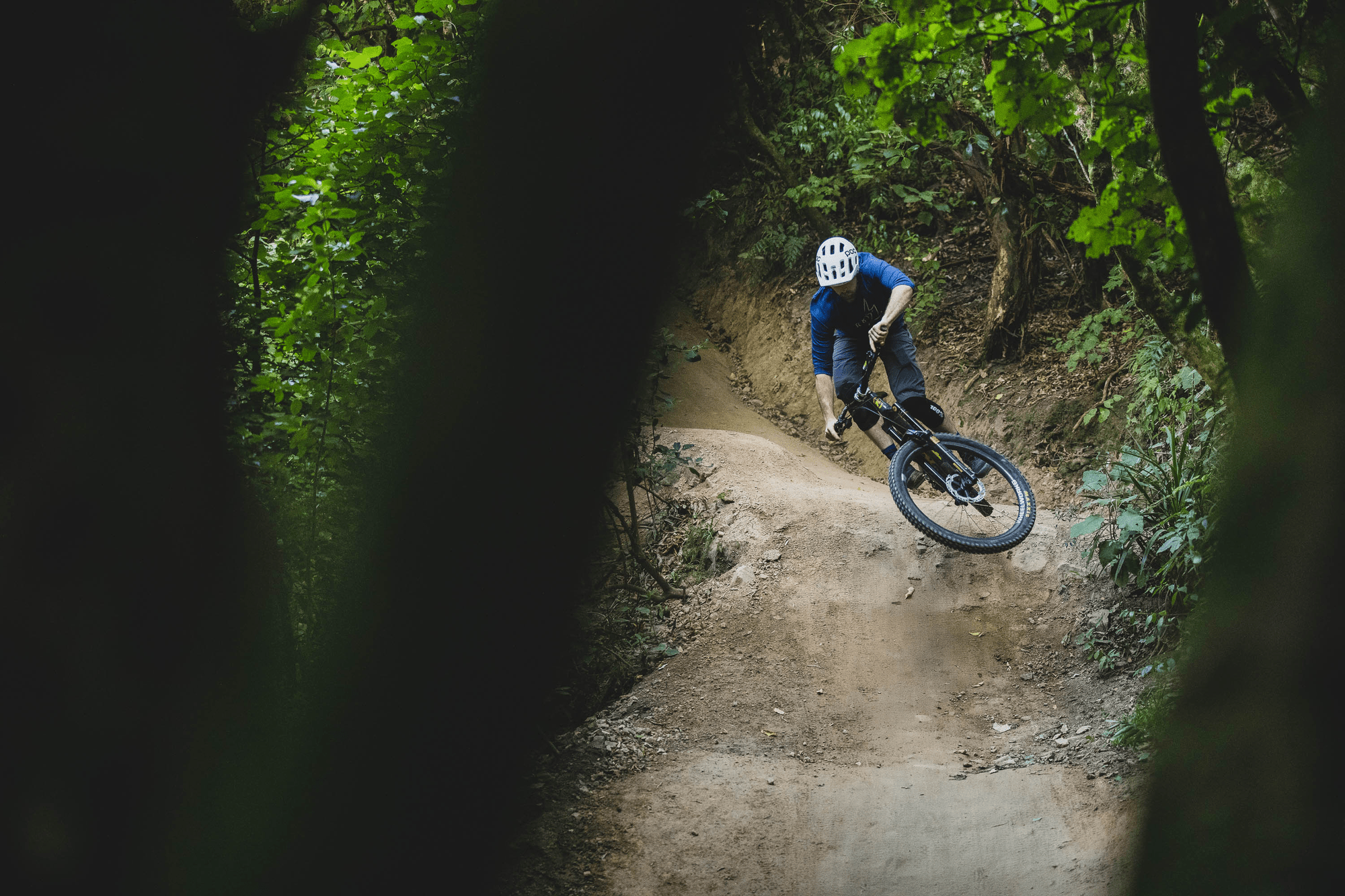
The Teratec Plus is aimed at the Enduro end of the spectrum, promising ‘Level 1 Protection’ in a pad you can pedal all day in. I can definitely say that both these claims are true - the protection level certainly lives up to the marketing hype. I've had some massive rags with these pads on and come out the other side with only a bruised ego. I'm a really big fan of the extra bits of pad they have added around the actual knee protector, as these help with awkward little bumps that can hurt a lot more that they should - funny bone knocks but in your knee. The ventilated mesh around the back of the pads do a good job of keeping you cool, but they still run a little hot in comparison to a lot of the lighter weight pads. You can kind of notice the knee pads when you first put them on, but after about half an hour of pedalling you forget you’re even wearing them. They are low enough profile that they easily fit under your shorts, and are long enough that you don't get the dreaded twat gap. They are a good length over all, covering the area you are most likely to hit in the event of a crash.
Over all, I would say 100% Teratec Plus Knee Guards are the best pads I've used in the last few years. Offering great protection, you can ride all day in them if you don't mind a slightly hot knee, with the main thing being that they don't slip down in the event of a crash. I would happily ride laps of the bike park with these on, then head off on a three hour pedal in full confidence that if I have a crash, my knees are probably going to be fine.
Distributor: FE Sports
Words: Liam Friary
Review: Giro Xnetic Trail Gloves
A good glove is not always super easy to find. Yes, there’s a ton on the market but they’re all not the same and riders want different things. For me, like a lighter glove, I like to get feedback from the bar. But I do want protection and need em’ to be robust. Giro has developed the new Xnetic Trail glove from techniques they pioneered in their footwear. The end product is a seamless one-piece glove. Ok, so what is Xnetic anyway? It features a TPU skeletal system bonded to a knit material. It’s sock-like comfort which offers suppleness and breathability. It’s also DWR-treated which makes it repel water and they have reinforced rubber to enhance abrasion and durability. That’s a lot packed into a glove, aye?
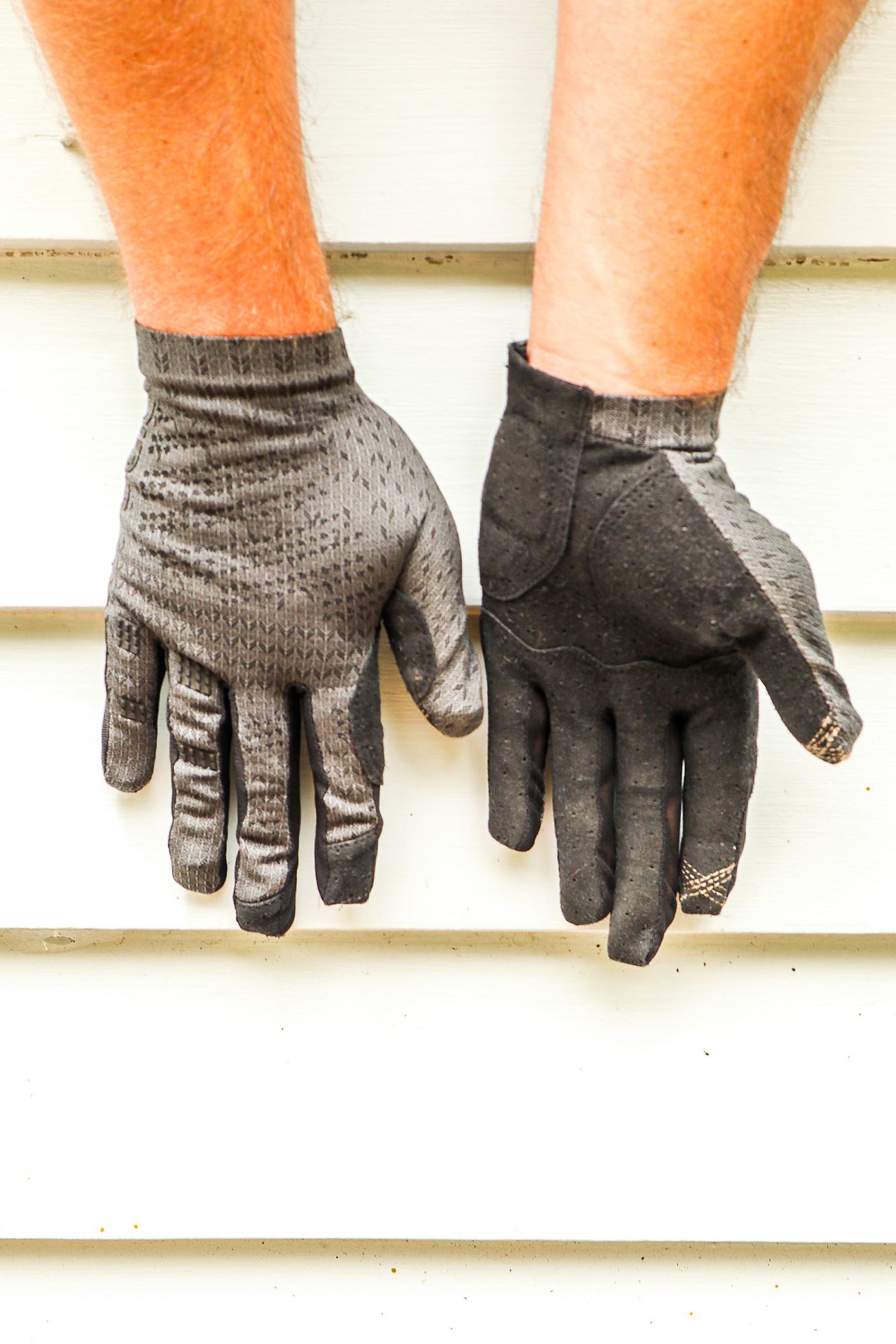
I’ve been riding with these gloves for a few months now. Firstly, they fit super well. No bunching whatsoever with these! This is down to the 3-piece palm construction that allows movement without scrunch whilst maintaining the bar feel. Secondly, they’re uber comfy. Thanks to the stretchy, strapless cuff help bolster comfort further and keep wrist movement unrestricted, plus it means there’s no Velcro to snag jersey sleeves. Thirdly, you can use your phone with them. So, now you don’t have to ignore your work calls (which you may still want to) and can take a photo. Or do whatever else we use our phones for these days.
On the trail the Xnetic gloves offered good grip, I had control whilst still keeping bar feel. The gloves felt minimal and wrapped snugly around my palm. I’d move my hand and the gloves go with them – no fuss or bunching. On (too many) occasions when I did fall, they kept my hands protected. I’d rather keep my hands scuff-free and these gloves did a solid job of that. In the wet weather, they kept my hands dry as the weather shred off them. I’ve been running these for a few months and will be using them for many more months to come. So, they might cost you, but they really are well made, damn comfortable and minimal with good protection.
Distributed by Worralls / RRP: $74.95
Reviewed by Liam Friary
Review: 100% Altec Helmet
Helmets sit at the very top of the ‘protection pedestal’ when it comes to mountain biking. Whilst it makes choosing a helmet a little overwhelming, I’m stoked to see so many different companies pushing them out. Helmets, and protective gear, are among the only product groups in mountain biking that I can get behind when it comes to companies pushing out gear quickly - ultimately, the safer we are the further we can push, and the less likely we are to develop injuries and conditions (such as CTE) further down the line.
It seems like only yesterday that 100%, a company with roots in motocross, started pushing into our sport. They’ve for sure made their mark - and the Altec is their first foray into open-face mountain bike helmets. It features 15 vents and, whilst this number isn’t even close to industry leading, the vents are all HUGE. It also features 100%’s Smartshock Suspended Rotational System, which is essentially their answer to MIPS. The Smartshock System is designed to absorb rotational impacts by compressing and allowing the helmet liner to move independently to the helmet’s shell. The independent movement reduces force on your brain, lowering the chances of brain injury in a crash. A network of shock absorbers throughout the helmet basically mean that unlike the traditional MIPS netting you may be used to on some older MIPS helmets, the Smartshock System doesn’t look all-too-different to a set of standard, pre-MIPS helmet padding – remember those days?
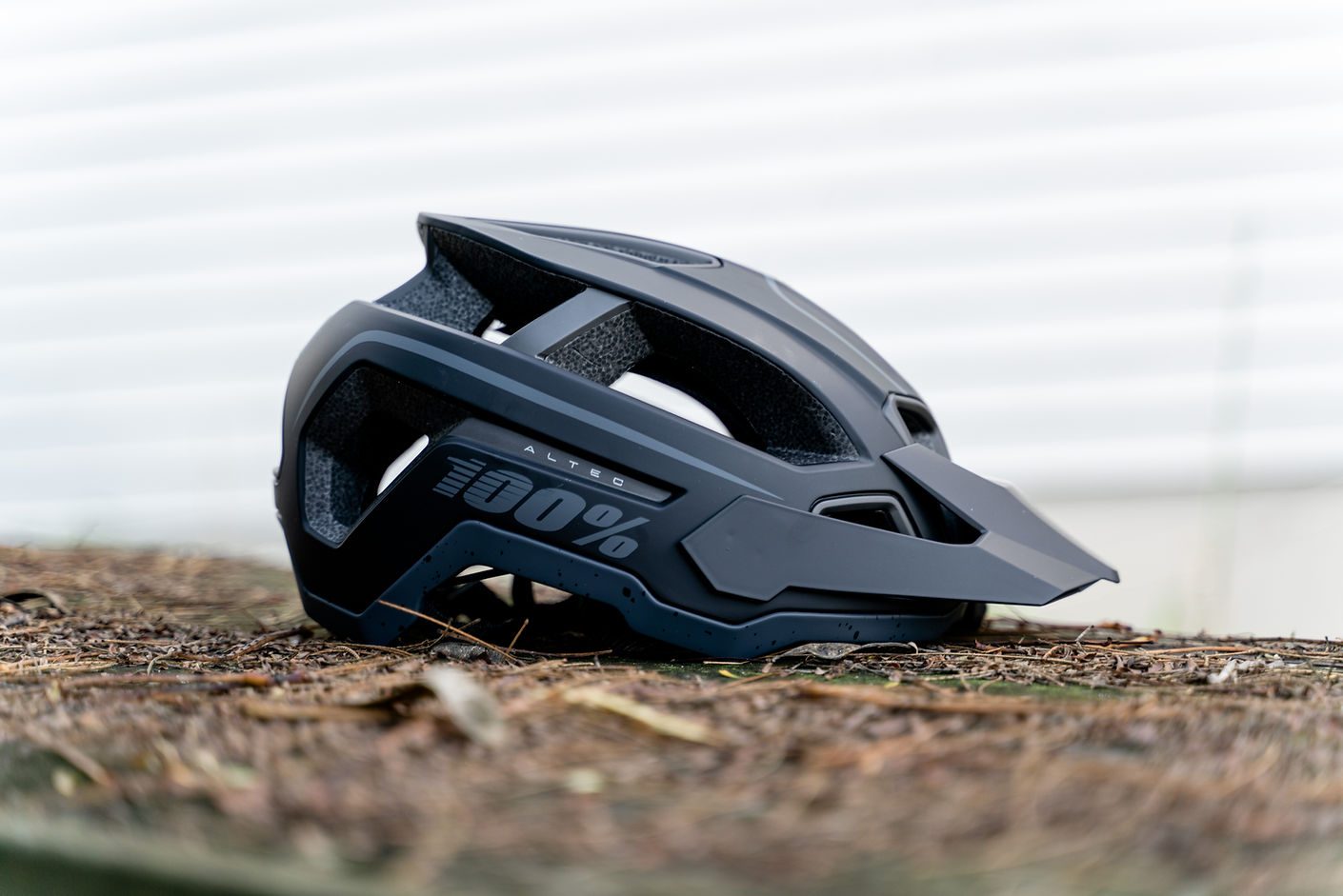
I’ll start off by saying that the Altec is comfy. Not necessarily ‘write-home-about’ comfy, but it sits firmly middle of the road. The first time I tried it on, I felt a little pressure right at my temples, but after noticing that there are two mounting points for the harness, I moved it to the backmost option and found the pressure was gone. I’m a couple of months into my time with the Altec now, and have found that when I first put it on there’s a tiny amount of pressure right by the adjustment dial on the back of my head, but once I’m moving I completely forget about it. It’s worth noting that I didn’t find any info on the different mounting points for the adjustment harness, but if you pull back the foam you’ll find you have two mounting points right above your ears, and two where the adjustment dial attaches to the helmet. I’ve heard a little feedback about how some people have found the Altec doesn’t fit ‘quite right’, so if you’re trying one in-store and it doesn’t feel ‘quite right’, have a play around with the mounting options. In terms of coverage, it does a decent job. It doesn’t sit cross-country helmet high, but it doesn’t cover as far down the back of your head as some of the other trail helmets do. Less coverage also keeps the helmet lighter, and I found the combination of this and the lower weight actually felt really good around some of my local trails, where there’s not a ton of steep, rocky or rooty riding.
This helmet really shines on the ventilation front. As mentioned earlier; whilst 15 vents isn’t an impressive claim in itself, the amount of air these 15 vents let through is definitely worth mentioning. I’ve been testing this helmet over our transition from autumn to winter, and on one cold winter morning I actually rode back to the car to swap out the Altec for another helmet that doesn’t breathe as well. I can already tell the Altec will be my go-to summer helmet, given how well it breathes and the fact that the foam liner does a great job of keeping sweat off your face. The Altec also features three visor positions, so you can ramp it all the way up to stash your goggles underneath, then pull it back down once you’re ready to ride. I was actually pretty stoked on the fact the visor is stiff enough that it won’t move by itself, but not so stiff that it feels like you’re trying to rip the helmet off your head to adjust it.
All in all, would I recommend the Altec? Definitely. It’s lightweight, great ventilation means you almost forget you’re wearing it, and the Smartshock System adds that little extra peace of mind.
Distribuited by FE Sport / RRP: $299
Words: Cam Baker
Review: Santa Cruz Bullit
I had two reference points coming into this review: the first was the original 1998-2005 Santa Cruz Bicycles Bullit; the second was Lt Frank Bullitt’s tyre-peeling, torque-monster of a Mustang Fastback from the 1968 movie of the same name. The first reference point provided a lot of context for this new version of the Bullit, given the original bike developed a bit of a cult following in freeride circles back in the day. The second reference point provided some unexpected context for how the new version of the Bullit performed on the trails.
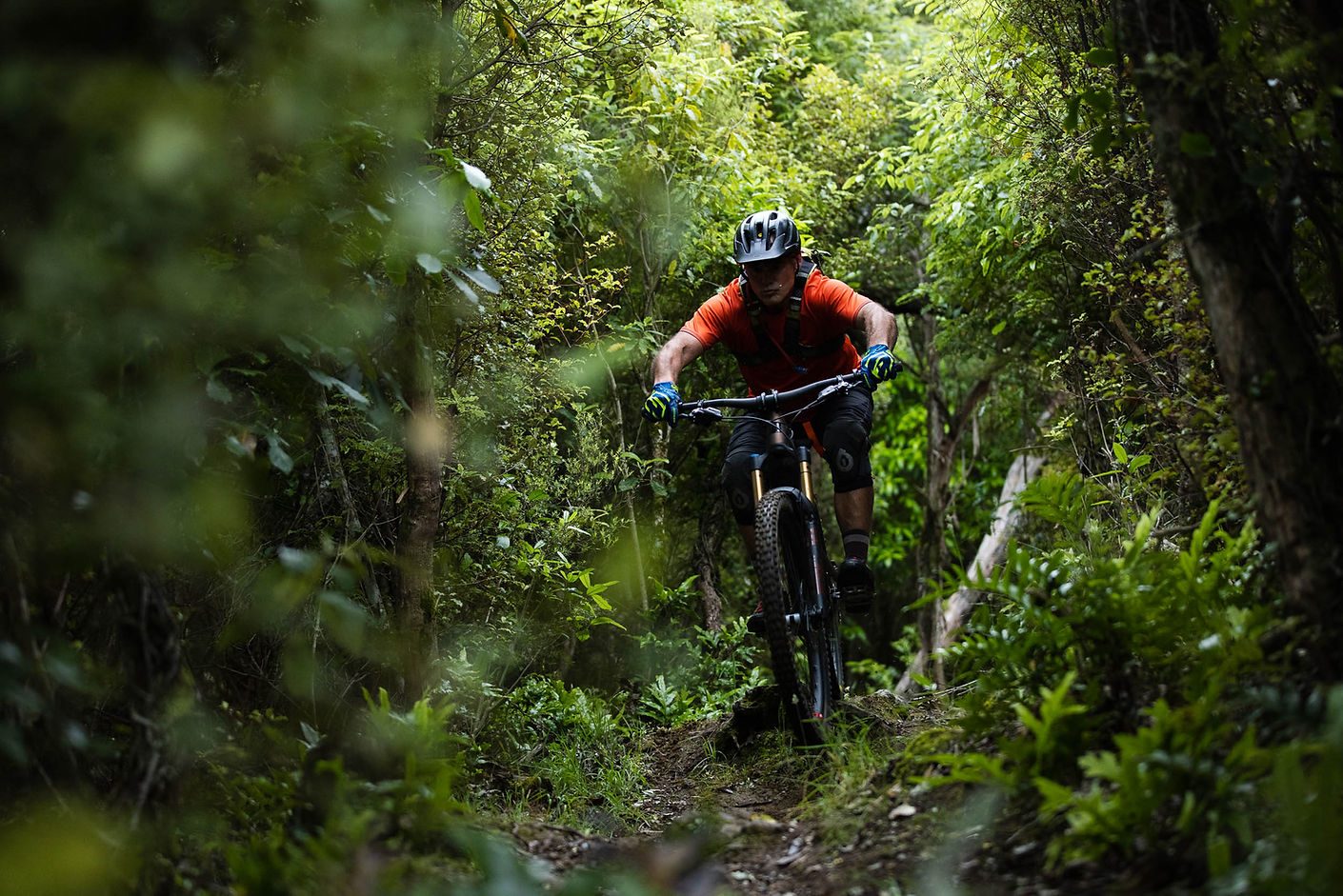
Hyperformance Hardware (the NZ Santa Cruz Bicycles agent) set up a media camp in Nelson when the first two Bullits landed in NZ, with a brief to throw them at Nelson’s biggest hills and toughest trails. Like any good bike review, the weather was also organised just as well as the media camp schedule was, so we got the full gamut during three days of sweet riding.
So, what have we got here? In Santa Cruz Bicycle’s own words; the new Bullit takes a ‘no limits approach’, is unapologetic and with a spec and build that ‘reflect the smashability of the platform’. It is also ‘a bike for riders who seek V10 level terrain that's out of range of any chairlift or shuttle road’. Bold claims. Have they been met?
Full disclosure #1 first: I realised pretty quickly that, subconsciously, I’ve been keeping myself at arm’s length from the pedal assist, mountain e-bike evolution that we are seeing in NZ and globally - for no good reason at all. I’ve already seen and experienced a rapid evolution in mountain bike design over my years of riding and racing. From what we were riding in the 90s, to what we are riding today, is nothing short of comparing a Model T to a Shelby Mustang. So why should jumping into the pedal assist e-bike space be any different? Well, my conclusion is - it shouldn’t be. What we are seeing is the natural, technology-based evolution of the mountain bike, giving nothing but good options for the trail rider. If you’re feeling a bit apologetic that you’re riding one, and maybe feeling like you have to make excuses for riding one, I reckon you should absolutely own it instead. We’re all part of the same space and having the same type of fun, so let’s just get over it and move on.
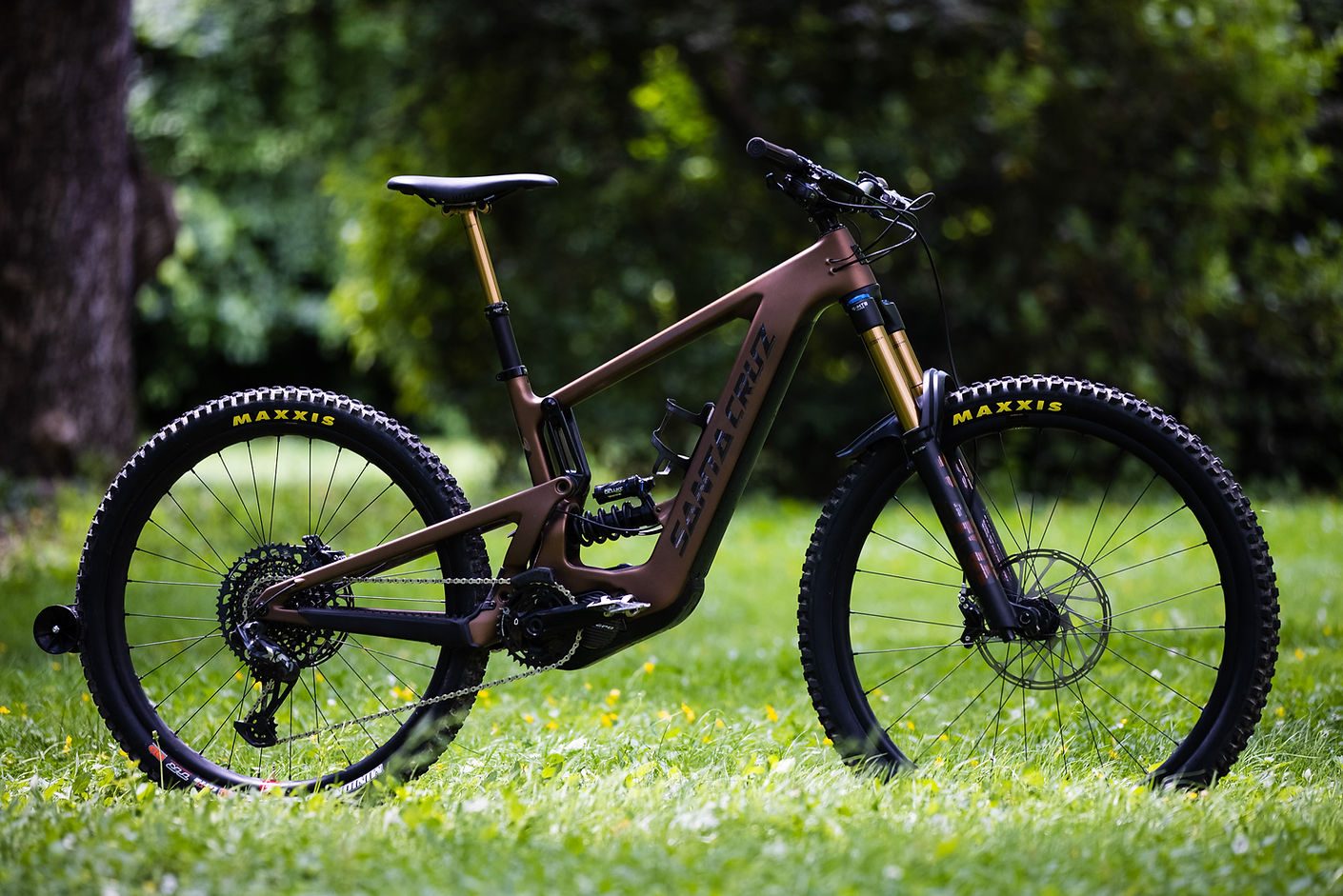
The Bullit is Santa Cruz Bicycle’s (SCB) second pedal assist e-bike. The first, the Heckler, also used a recycled model name - this is a clever approach from SCB, providing a level of continuity and connection with early models that we don’t normally see in the mountain bike industry. The Bullit embraces SCB’s MX platform (29” front, 27.5” rear), tried and proven in the World Cup downhill space with their V-10. MX is a very grown up way to describe this setup, with the informal ‘mullet’ usually the descriptor. Which brings me to full disclosure #2: I’ve been a mullet fan for several years now, and while the opportunity to rock one on my melon is long gone, the bike version absolutely fits with my riding style and the way I want a bike to perform. However, retrofitting a 27.5” or 29” bike to mullet configuration usually results in having to tolerate some level of geometry compromise, and that can be annoying. With my latest trail bike version, I have been able to get spot on with a fair bit of tweaking, so hopping on the Bullit for the first time felt immediately right and I was definitely in my happy place.
SCB have built the geometry of the Bullit around this MX style configuration, and that really is the only way to get the full roll-over, stability and increased traction benefits of the 29” front wheel, together with the cornering performance and flickability of the 27.5” rear wheel. The parts spec on the XO1 Coil build that I rode, was spot-on. Every component has been spec’d to support the desired use of the bike, and not a single component should need to be swapped out before throwing this bike at the trails. There will always be personal preference items that riders like to bring with them between bikes but, in this case, and even with my own little foibles in mind, there wasn’t anything I changed - or even remotely needed to change - before getting rowdy on this bronze machine.
The drive unit is Shimano’s latest EP8 motor with 630wh battery. This review alone could cover the full capability of this technology, but that’s not going to make for the sort of reading I suspect will fly. In summary though, this drive unit can be set to three modes – Eco, Trail and Boost – which are exactly as they look. Together with Shimano’s E-Tube phone app, using Bluetooth connection, each of those three power levels can be custom tuned around Assist Characteristics (eco through to powerful); Max Torque (20-85Nm) and Assist Start (mild through to quick). The permutations are endless, and setting the app up and changing any of those parameters is, thankfully, completely intuitive. Two full profiles can be setup as well, so it is simple to have something like a more flowing, full power/torque trail riding profile and a more gentle beech forest/technical riding profile stored- or even a dry roots and wet roots profile ready to go. This capability to custom tune settings is sure to provide endless fun for EP8 Bullit owners, and equates to a valuable trail-side tool giving the ability to tune the drive characteristics to the conditions. SCB went with Shimano drive units for the Heckler, and now the Bullit, due to the high level of international support, the natural/instinctive way they work, and their proven reliability. There is very little adaption time for the rider when hopping on one of these for the first time.
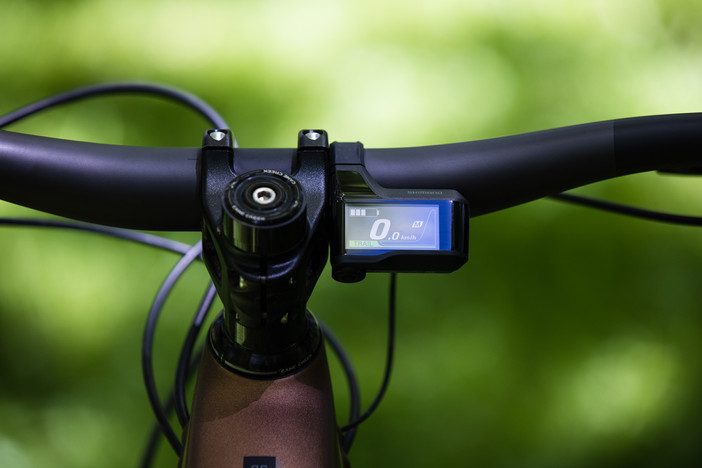
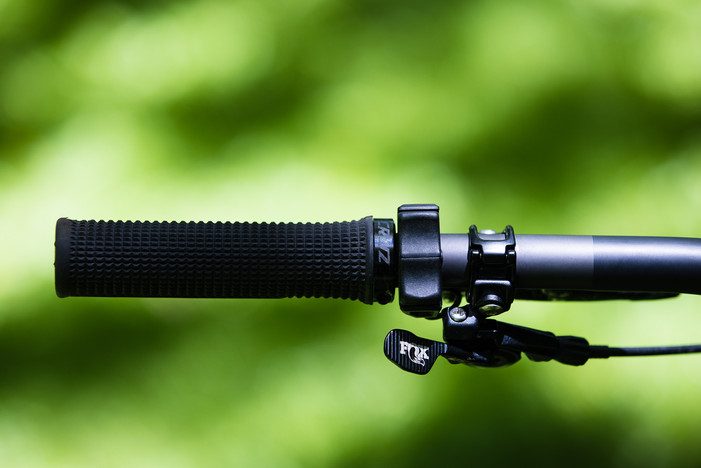
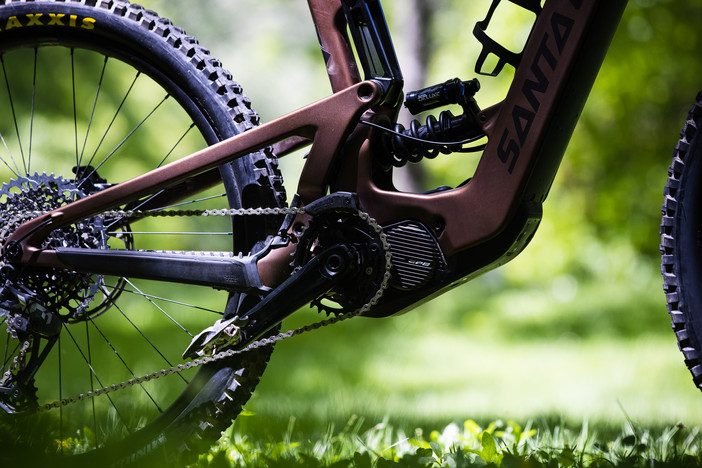
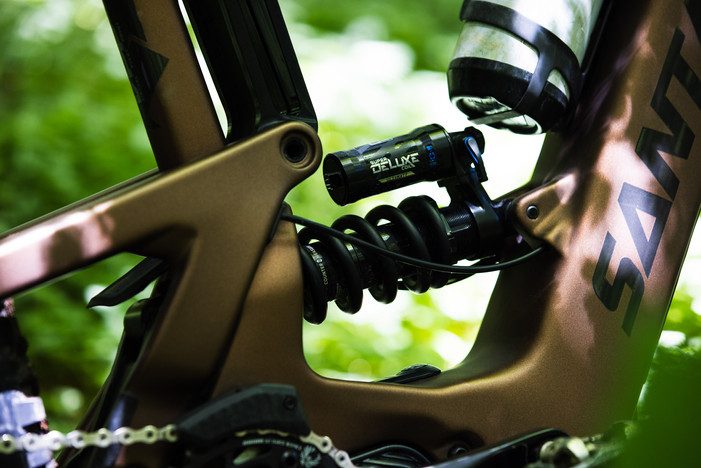


Our first day of riding was a bit of a shake down. Trails were reasonably dry and we hit some progressively harder trails as the afternoon wore on, including sessioning nasty, technical climbing sections that on a normal bike wouldn’t even be considered. My initial introduction and natural acceptance of the EP8 setup happened so quickly I was caught by surprise. Once I found the sweet spot around cadence, I was all over it. And that was a theme that ran through the media camp, regardless of what type of trail we were riding – when you’re working around that 80rpm cadence level, the world spins a bit slower. The first nasty, technical climbing section showed me that anticipation of gear selection, including using the single click shifter, needs to be slightly more advanced than on a non e-bike, to keep the motor working to deliver the right amount of torque and power through the drivetrain, to keep things surging forward. That learning again happened extremely quickly, and once sorted meant that ridiculously steep, rooty and slippery climbing sections of trail could be dealt with. It was relatively easy to get a feel for the torque assistance on these steep sections of trail too – constant pedalling pressure yielded great results, however, when climbing over steep, greasy root-infested sections of trail, some gentleness was needed to manage the torque. If front-back weight distribution was not quite right, even for the briefest of moments, things moved pretty quickly into Bullitt Fastback territory, with only the blue smoke missing! This is where the tuning capability of the motor really comes into its own, and dialling down the Torque, and possibly the Assist Start functions, will tailor the motor’s performance to the trail conditions, and desired performance. The bike does require a more deliberate technique with front/back weighting when climbing the technical, steep stuff though, with the drive system torque and power meshed in to provide more go-forward. It’s exactly the same technique as used on a non e-bike, but on steroids – the more deliberate the technique, the better the bike climbs. You definitely can’t just be a passenger on this bike and simply rely on the drive system to deliver in that sort of climbing terrain.
Our second day of riding kicked in after five hours of the sort of heavy spring rain we have had a lot of in Nelson this year. Trail plans were changed a wee bit as a result, with more of a focus on the lower areas of Fringed Hill to explore what the bike would do across a wider range of trail type. Day three took us to exactly the type of terrain this bike is designed for: steep, long climbs; technical, rooty and rocky linking tracks; and steep, rooty grade five goodness.
For me, slamming the bars on the large size bike was the only structural change I made, and it put me straight into a familiar mode of riding that usually only comes with a triple clamp fork setup. The front end of the Bullit encouraged that approach, with the Fox 38’s proving to be ridiculously solid and composed under severe front-end weighting and aggression. Non-plus size Double Down Assegai (2.5 front) and DHR II (2.4 rear) tyres give an obvious signal of the intentions of the bike, and are a welcome, important and entirely appropriate part of the overall spec, absolutely supporting the aggressive intentions of the bike. These same tyres are specced on all the different models of Bullit (as is the same CC carbon frame and EP8 drive unit), so SCB aren’t scrimping in that department.
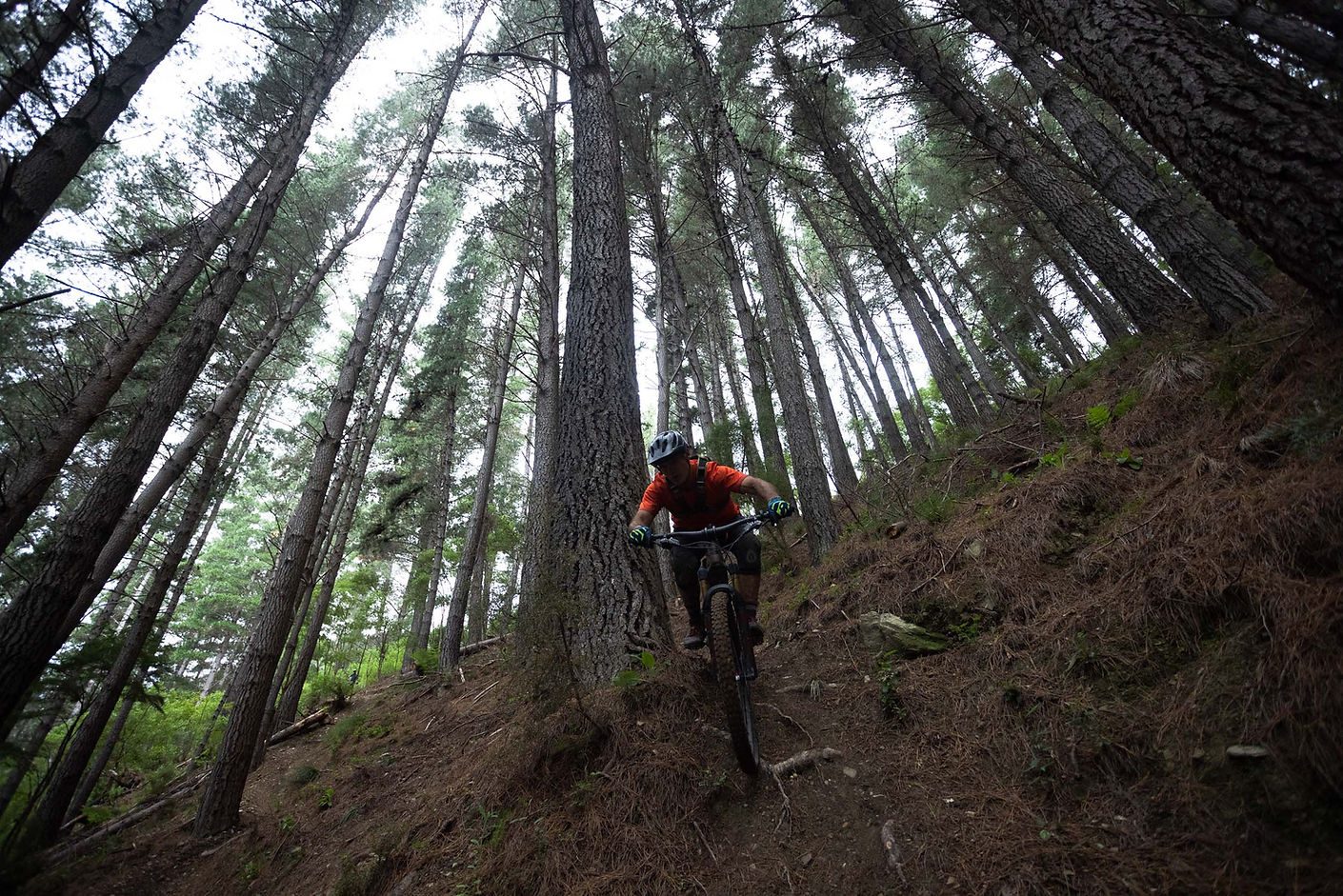
Carrying on the front-of-the-bike theme, two areas in particular stood out. How the bike took and held a line across off-camber, root infested trail sections was stunning – the combo of a fork with minimal lateral deflection, good damping performance and the super aggressive front tyre all working together to encourage line choice that would otherwise be off the table. Also, pushing the front of the bike through steep, deep holes and transitions was rock solid. No suggestion of the front of the bike ever getting hung up on even the nastiest of trail sections was a real confidence-inspiring characteristic. Big rotor Code brakes (220mm front, 200 rear) were right at home in that steep environment, with oodles of power modulation always on tap, and no fading to speak of at all – that says a lot about SCB’s approach to parts spec on these bikes.
Our wet day of riding showed two surprising traits with this bike that are well worth mentioning. The first is how receptive the bike is to hooking up on slippery surfaces when feeding constant weight through the middle of the bike – it was amazing. This trait alone yielded a lot of riding joy, and epitomised the ‘ride it like its dry’ mantra that is always the go-to for riding the slippery stuff. The weight of the bike and its low centre of mass sitting on those aggressive tyres worked in complete harmony to provide gobs of traction. The other trait that popped up in these conditions, that was a little unexpected, was how well the bike responded to being weighted and unweighted – natural trail pumping. The suspension platform provided plenty of support when getting aggressive in this area, and the bike responded in kind with making massive amounts of traction where needed, but also when getting its float on to glide over those sections of trail that required lightness. This was unexpected for me, as the weight of the bike had no real detrimental effects on this playful style of riding.
When the fickle Nelson weather took a break, it opened up a last minute opportunity to give the Bullit a run on some more open style, flowy type trails. Nelson’s classic ‘riding on marbles’ dry surface was the connection for this, and it showed some traits of the bike that might not have been fully evident in the technical style of riding we had been doing. Stability at speed was no problem at all, as was making traction where needed (see above), but the open stuff highlighted the need to get really aggressive with the body English to make this bike sing. A soft approach doesn’t gel with the Bullit – it begs you, as the pilot, to give it the firm prompts it requires to do its thing. The harder it is thrown, pushed and directed at the trail, the more the overall package responds.
Of course, a bit of jumping had to be factored in during our riding days - it would have been rude not to. E-mountain bike riders who like a bit of air time usually tell the same story when asked how their bikes perform in the air, and it was great to be able to confirm that on the Bullit. Not only does normal jumping technique apply, but the weight of the bike adds a ramped up level of stability when in the air. It sort of makes a lightweight trail bike feel just a wee bit sensitive! So jumping performance gets the big tick too. And – just a quick comment on the bike’s weight: SCB quote just under 23kg for the XO1 Coil we rode. That is a true weight, and considering the coil shock and downhill tyre spec, it reflects very favourably on the overall package. Compared to most other bikes in this category, it is definitely at the lighter end of the scale.
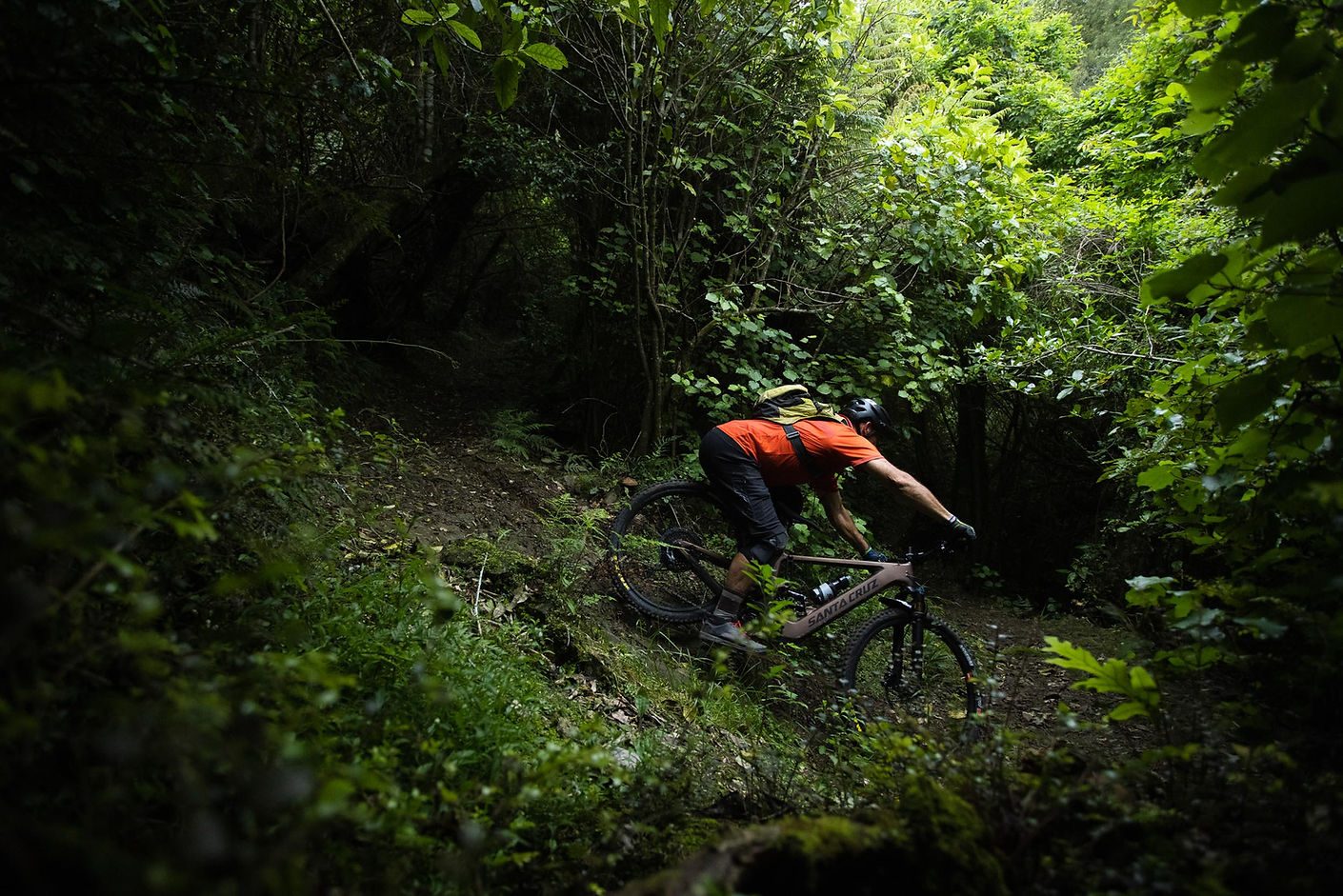
Without getting all tied up in watt hours, power settings etc, a five hour hard ride took us into one-bar-battery-remaining territory which, depending on power setting to get you home, was in the realm of about a 15km back-up range. That was after five hours of hard riding and climbing at pace. For my legs and lungs, the load we were climbing at was very close to my normal riding, but at three to four times the pace. That surprised me too, and I’ve come away from this review having dispelled any suspicion that pedal assist mountain bike riding might be too easy. Of course you can cruise, but using the drive system to its full capability becomes a new normal very quickly. I honestly didn’t realise just how quick we were climbing on these bikes until we came up behind non e-bikes.
I’d say Santa Cruz Bicycles have met their claims with the Bullit. They are bold claims, but so is this bike. Yes, it’s got some weight to it, but it didn’t take much time on the bike for that weight to be pretty much forgotten; the overall package just works so well. Yes, it’s a lot of coin too, but it’s also an awful lot of bike and probably represents the sharp edge of where this technology is at. The spirit of the original Bullit lives strong in this new model, and I reckon that the King of Cool, Steve McQueen, would have approved if this Bullit had been around in his time.
Distributed by Hyperformance
Words: Chris Mildon
Images: Henry Jaine
Review: Granite Design Stash Chain Tool
Granite Design’s Stash Tool offers everything you need for a quick fix, but it’s lacking one thing: a chain breaker. The Granite Design Stash Chain Tool is a chain tool that hides away inside your bar-end, and is their solution to the Stash’s lack of chain breaker. When combined with the Stash Tyre Plug and Stash Steerer Tool, it gives you the ability to carry everything you need on the trails, integrated on your bike.
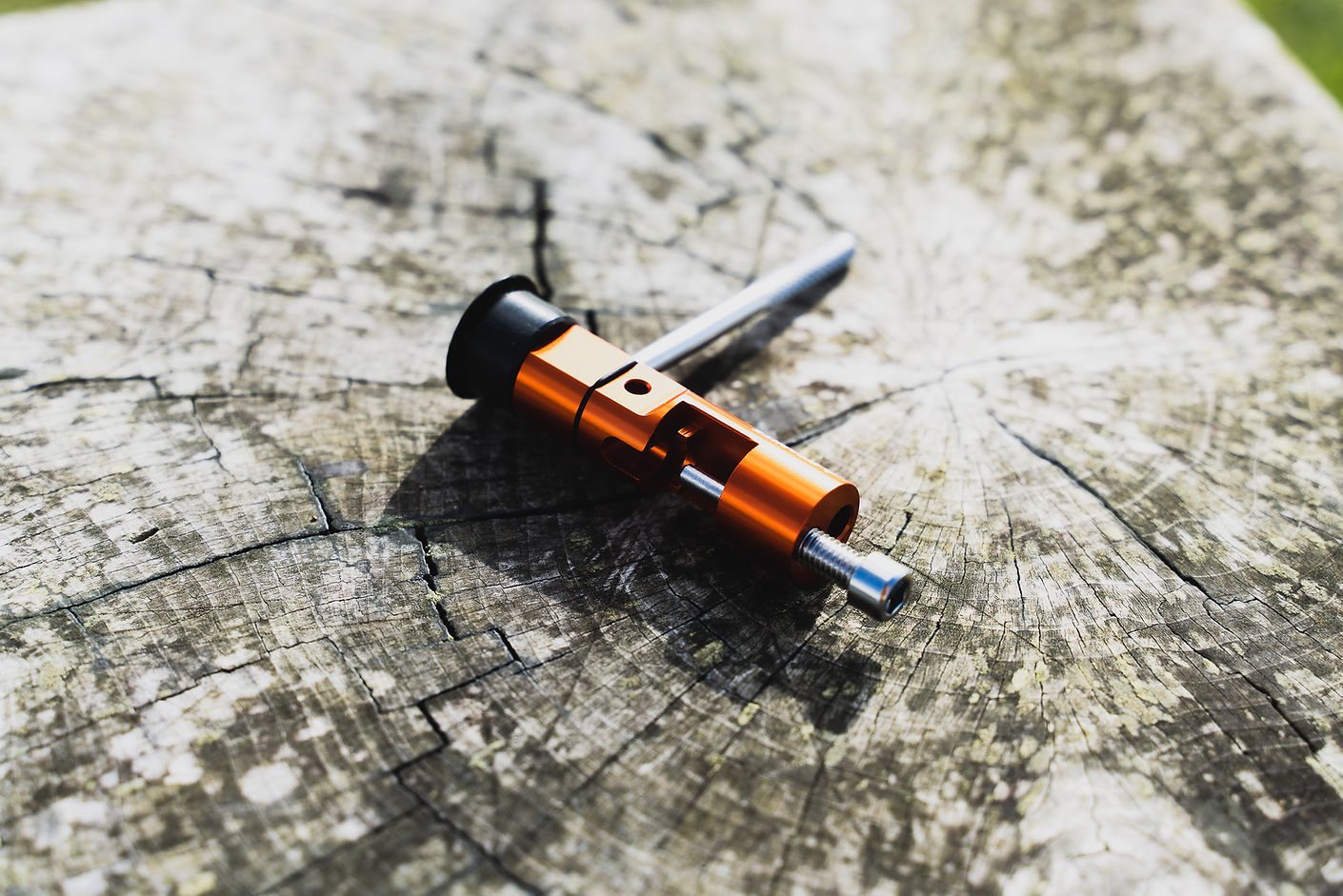
The Stash Chain Tool consists of a few parts: the breaker body, the driving pin and a steel handle. All of the parts are stored within the tool body itself, which also features a spot to stash a quick link. Something that had impressed me with the Granite Design products I’ve tested so far, is the build quality - and the case is no different here. All the threads are well formed and secure, and the actual material used feels nicer in hand than some multi-tools out there. The Stash Chain Tool is secured inside your bar by a 3mm bolt. Tightening this bolt compresses, and therefore expands, a rubber bushing on the tool that wedges up against the bar, providing a solid, rattle-free fit.
When it comes to operation, the Stash Chain Tool is a breeze and partners up well with the Stash Steerer Tool or the RocknRoll (both of which you’ll find reviewed in this issue). Undo the 3mm bolt on the cap until you can remove the tool from your handlebars, unscrew the handle from the tool body and screw it into its mount, then break out the 5mm on your multi-tool to drive the pin. There ya go, ready to break any 9-12 speed chain that finds its way into your tool.
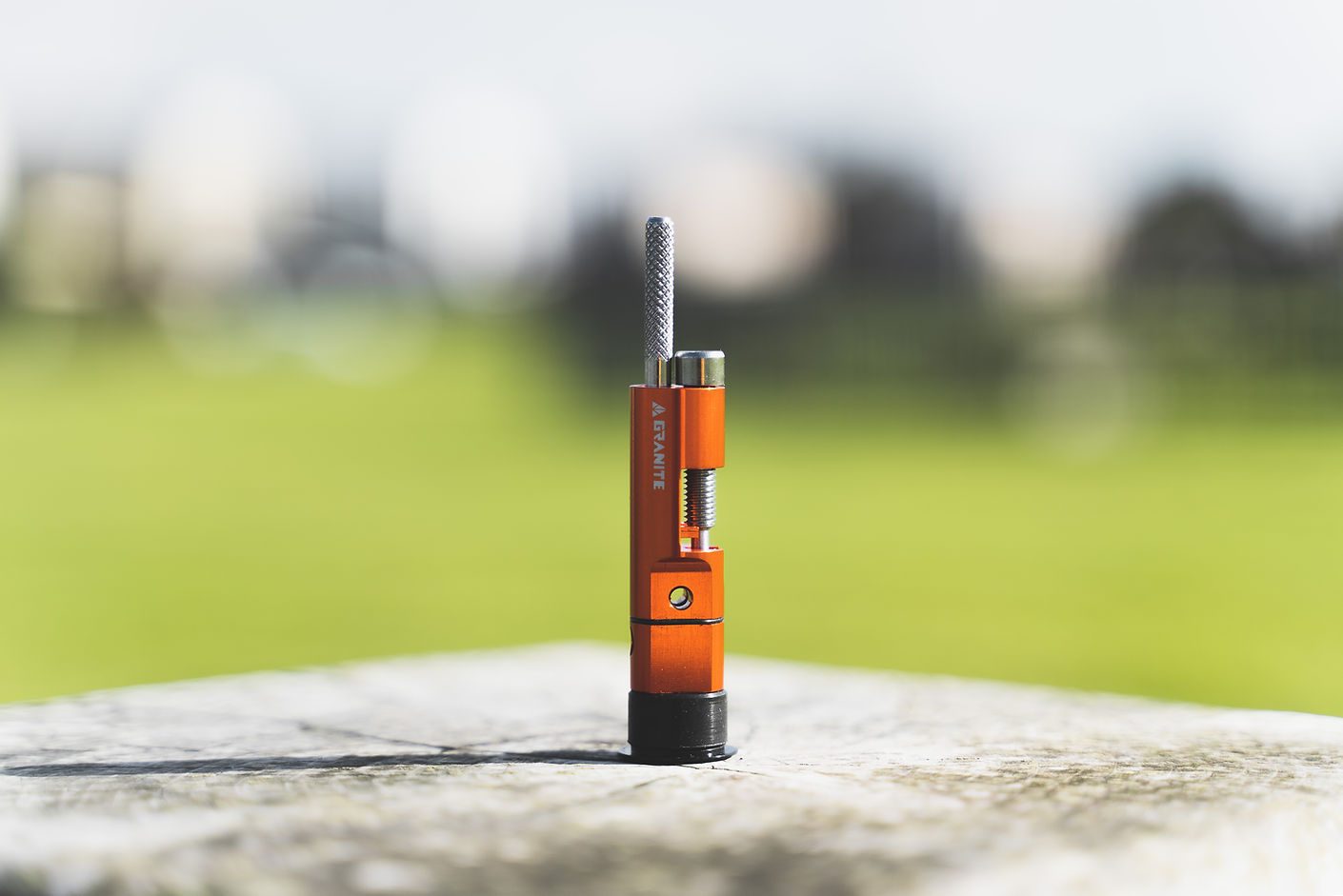
Emergency chain breakers are exactly that, meant to break chains in emergencies. As a result, they are often just good enough to get the job done, so I was surprised by the amount of leverage provided by the Stash Chain Tool, and how solid it felt in hand. The teeth that retain the chain in the tool are smaller than a typical chain breaker, so you do need to spend some extra time making sure everything is lined up before you go cranking on the tool. As far as a compact chain breaker you can carry with you on the trails goes, it’s about as good as you’ll get.
It’d be nice to see another handle integrated somehow, to drive the breaking pin, but this is by no means a deal breaker and I can say that whether you intend on using the rest of Granite’s Stash range or not, the Chain Tool is definitely a worthwhile purchase. Especially if you want a solid chain breaker that you can leave on your bike and forget about.
Distributor: Everoutdoor / RRP: $49.99
Words: Cam Baker
Review: Funn Funndamental Flat Pedals
The FUNN Funndamental pedals are a 6061 alloy flat pedal, featuring 11 replaceable pins per side, a GRS grease port, and a nice big platform. There come with long and short pins and a couple of little tools to remove/fit them as, out of the box, no pins are installed, allowing you to place as few or as many as you like in different patterns. They feel pretty flat underfoot, and are possibly less concave than the BlackKats I usually run, and feel very solid.
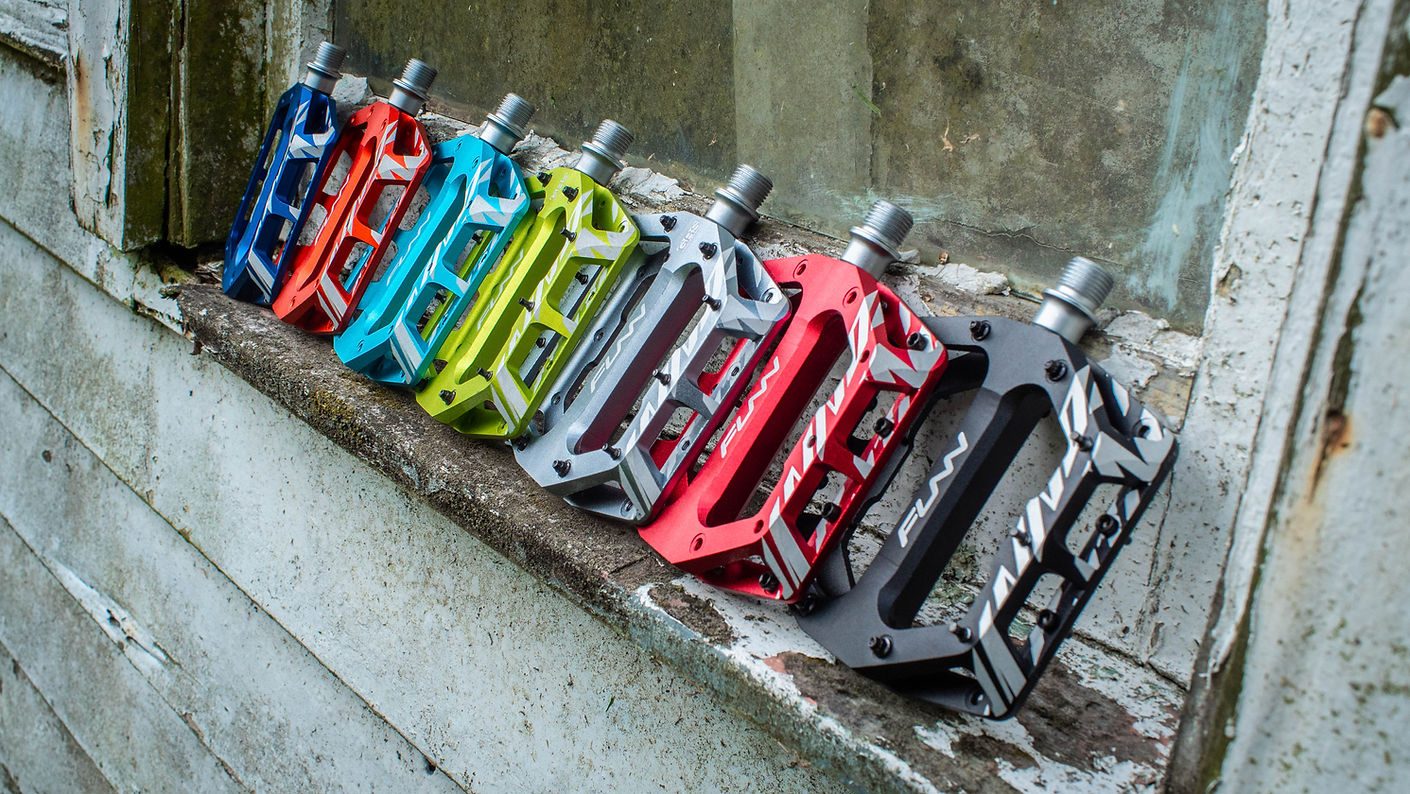
Pros:
The pins are needle sharp which gives a heap of grip, but will probably open my shins up next time I muck up a crank flip. The nifty grease port is a good idea, and the pedals run nice and smooth right out of the box on a cartridge bearing and DU bushing. I haven’t used the port yet, but it looks like an easy way to maintain the pedals without rebuilding.
These are a tough looking pedal and, so far, have handled pedal strikes well, with no scuffing or bent pins. There is a feeling of less foot fatigue compared to the BlackKats; I didn’t have to try grip my feet on as hard and they stayed put wherever I placed them over rough terrain, while allowing fine tuning of my shoe position with a gentle lift and slide technique.
The choice of seven colours is cool, especially if you're into matching every component on your bike - or contrasting them. I tested the silver ones, so can’t speak for how well the anodising stays on after smashing rocks - yet.

Cons: It’s a hassle to put the pins in yourself (seeing as no one will ever run them without pins) but it does allow personal tuning and set-up, so that could also be seen as a ‘pro’. You decide, while you're screwing the pins in!
There are no spare pins included, but they are supplied with long and short pins, washers and tools.
The less pointy outer pins are kinda pointless (pun intended) as they don’t really grip at all. It would have been cool for them to still have a sharp end. Overall, I prefer the Funndamentals to my regular pedals, and they will be staying on my bike. They feel like a solid, modern pedal yet offer nothing extreme or ground-breaking - which can be a good thing for a component that needs to do one job and do it well. At $170 retail, I would consider them fundamentally good value as well.
Words and Images: Finn Lloyd
Review: Galfer Brake Rotors, Adapters, and Pads
A wise man once told me, in the context of going fast on two-wheeled machines, that “brakes just slow you down”. Never a truer word was spoken, albeit delivered with the intention that you should do whatever it takes to stay off them and keep the throttle twisted/pedals turning for as long as possible, with the levers only deployed as a last-minute resort. In a way, the wise man wasn't only championing not braking, but having good brakes to call on to do their job strongly and instantly. It's somewhat ironic that, at the time of the imparted wisdom, disc brakes were still new tech in the moto world, and coaster and caliper brakes would continue to rule the bicycle realm for a good couple of decades yet. How the times have changed.
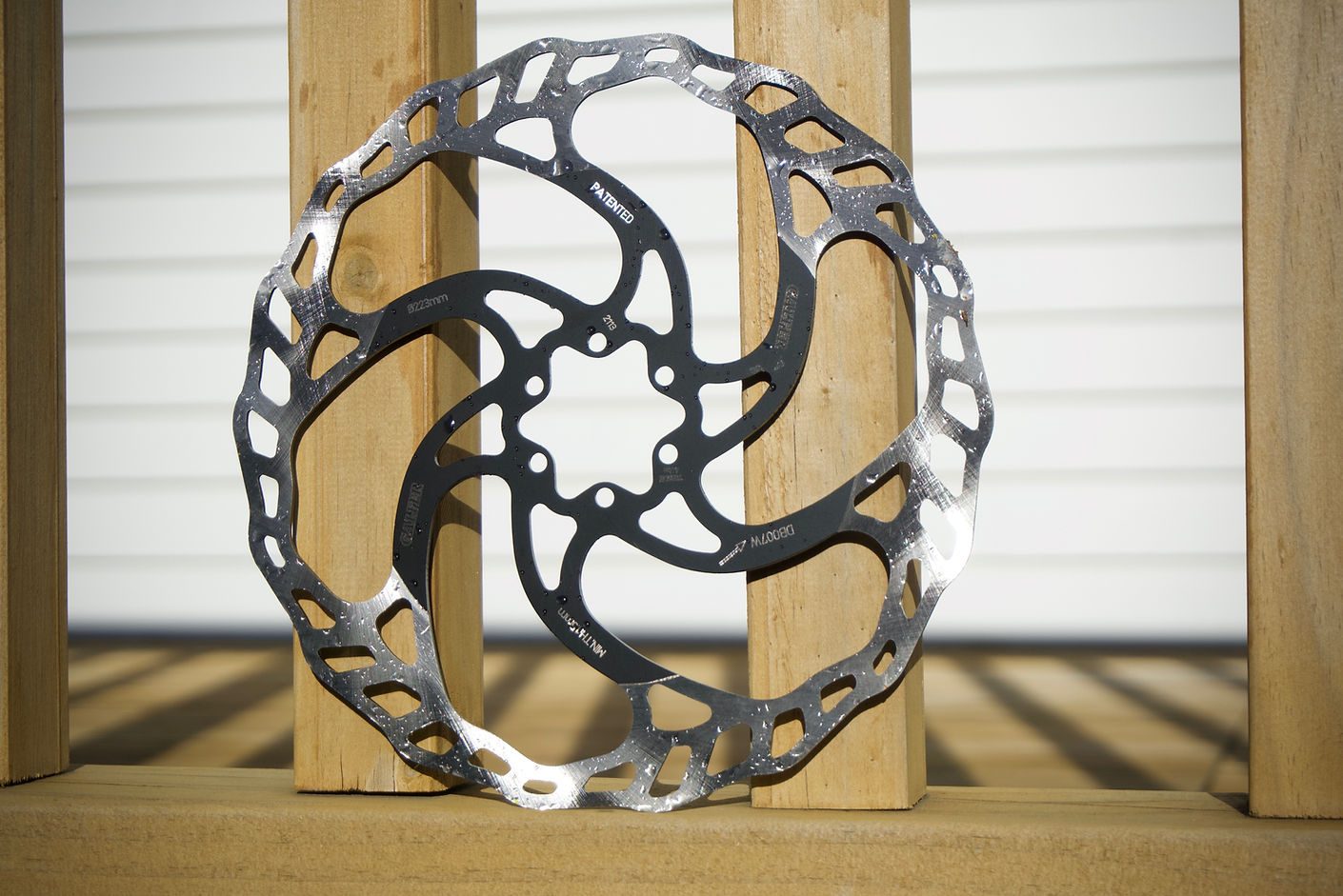
Today, those words still ring true, and we are blessed that we can “lay off the stoppers” until the very last instance, as the power of modern mountain bike brakes is far superior to anything we tried to stop our two-strokes with back then. It's inevitable that crossover between the two sports has taken place, with moto companies either having influenced development within the bicycle industry, or jumping into the pool completely and applying their experience to the testing waters. Spanish company Galfer has taken the latter approach and is offering a wide range of braking options for the pedal set.
If you've never heard of Galfer you're probably not alone, yet they are not exactly a new player in MTB, having developed brake pads for bicycles since 1990. Their automotive history goes back as far as 1952, so they know what they're doing. Being mainly marketed in Europe for most of that time, they are now expanding into the international market in a big way. I was excited to see their name here in NZ and, serendipitously, I was looking to upgrade my eMTB brakes when I saw that FE Sports were distributing Galfer down under. A set of 223mm rotors, eMTB specific pads, and the necessary adapters were soon on their way.
The stock brakes on my eMTB were not bad, but not outstanding either, so I thought it would be a good test to see how much difference bigger rotors and special pads would make. The Shimano 4-piston calipers I was using were at the lower/mid-end of their range, so could they be made to work like a high-end calliper? Short answer, yes! Immediately the power was increased, noticeably, and the feel at the lever was definitely more 'grabby' - in a good way, like a sensation of the pads biting the rotor rather than dragging on it to slow the wheel. Whether this is due to the semi-organic/metallic compound or the bigger rotors, well, I'm not sure, but I'd say a combination of both is likely the answer. There is no noticeable increase in rotor flex over a 200mm disc, as the 223 uses a thicker 2.0mm steel which keeps them straight and resists/dissipates heat build-up better. The Centrelock to 6-Bolt adapters are beautifully made, by the way, and the tight interface between them and the rotors no doubt helps with the solid feel also.
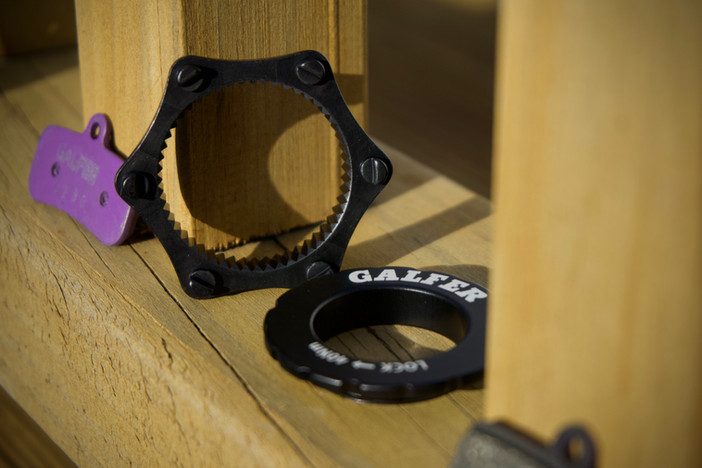
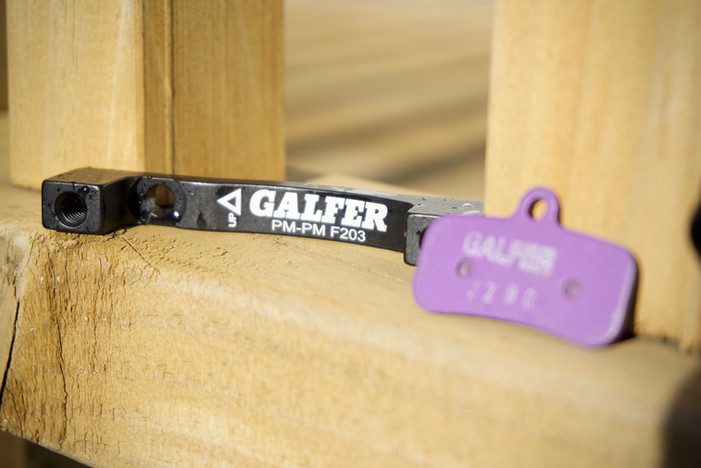
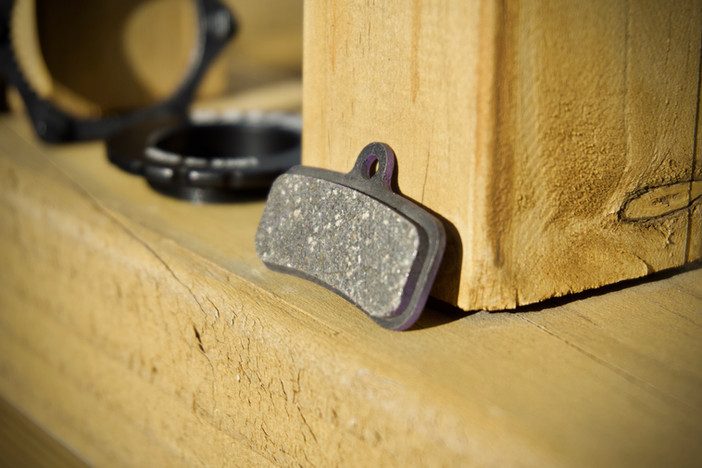
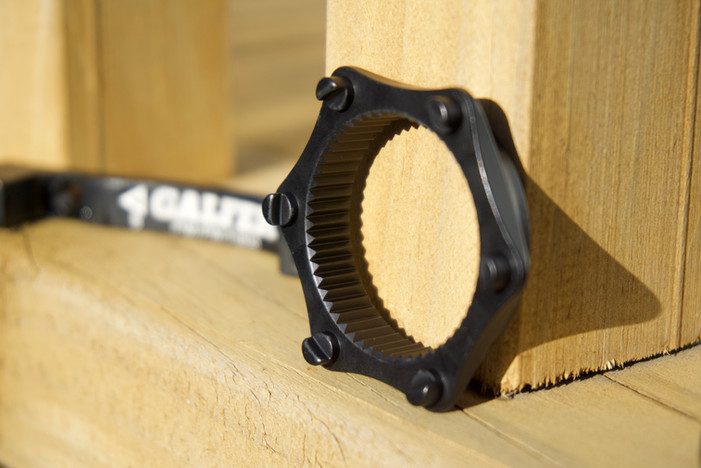
Having recently upgraded the callipers to Shimano's Saint model has stepped up the power even more, as you'd expect. The bite, modulation and precision of the braking is as good as anything out there, and the Galfer components are a worthy enhancement to any brakes, from low- to high-end. If you want to go fast, you need to stop quickly and consistently, and these Spanish brake guru’s bits will have you flying with the confidence to stop. Wise words indeed.
Distributed by FE Sports
Reviewed by Brett Kennedy
Review: Norco Torrent
Hardtails. It’s where we all started. Whether it was a Raleigh 20, a PK Ripper, or a 90s Diamondback, almost universally we all started shredding on a hardtail bike of some description.
However, with the wave of decent full suspension bikes coming to market from the 2000s onwards, most regular mountain bikers have moved to a full suspension bike being their usual trail machine. Despite this, the diehards have remained - outliers; trolling us on their nimble single speeds; others cajoling us on their 26” wheeled fluro-accented 90s machine, with clothing to match; and the odd hardcore XC racer, rolling up on the starting line. Some even manage to hit the trifecta and achieve a higher level of consciousness by occupying the Venn centre of those three circles in one sweet rigid moment. But, if you thought for a moment you didn’t fit any of those categories - you like gears and on-trend fashion, and have no interest in racing - the good news is there is still a place in hardtail nirvana for you. The mountain bike industry is always on the hunt to be able to provide exactly what you are looking for and, as such, a new category has emerged in the last few years that caters to those who might like the aggressive riding characteristics of a slack full suss, but without some of the drawbacks such as extra cost, maintenance and lack of pumping ability.
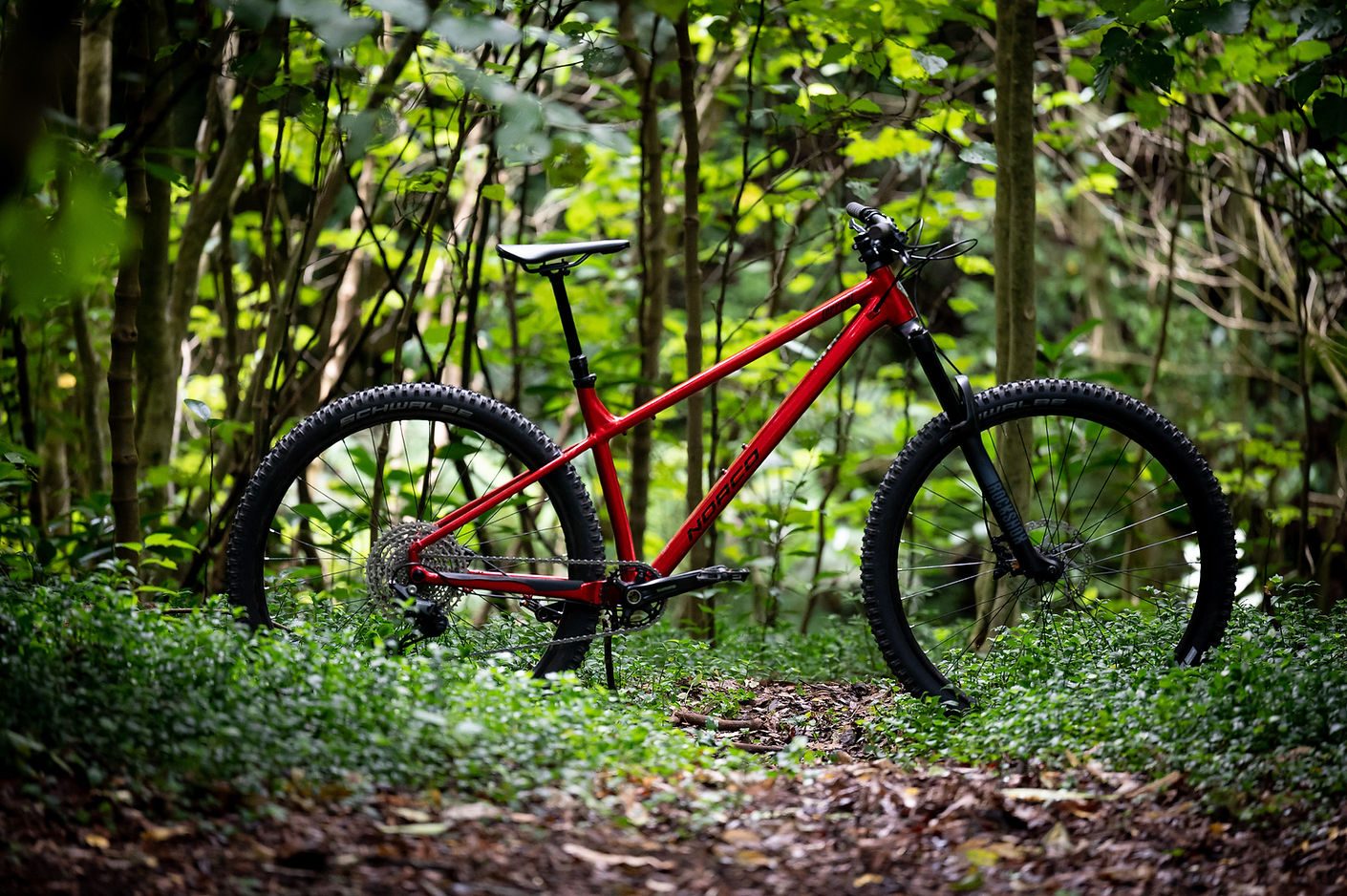
The new Norco Torrent is one of these bikes - and we’ve had the chance to spend some time reviewing it. The Torrent comes in two frame materials (steel or alloy) and at two price points for each frame. The A2 comes in at $2499, the A1 (tested) at $2999, the S1 at $3299, and the flagship S1 at $4499. The steel frame is also available as a frame only for $1099. Like most bikes in the current climate, stock is extremely limited so you may have to ring around a few shops before you are able to get your hands on one.
First off, yes, it’s true - and now officially, scientifically proven in the NZ Mountain Biker laboratory - red goes faster, and therefore this Torrent is damn near flying. It’s got that same kind of wow factor that made your eyes pop out of your head when you unwrapped your first bike on Christmas day. You can’t help but smile at this bike. And, maybe that’s a bit of a clue as to what this bike is all about; hardtails have a way of harking us back to simpler times, before we began obsessing about what difference five psi might make, tokens in our shocks, and if a nitrogen fill would actually make us faster. No. hardtails force the rider to remove themselves from any such trivialities, name them for what they are (“bull s%*t”) and let their own riding skills stand for themselves…. Or not. It’s an approach to riding that is both freeing, and terrifying.
But enough waxing poetic. What is the new Torrent all about? Well, in the case of aggressive hardtails, it’s all about the numbers, and numbers that have been usually associated with that mad friend you grew up with who was always putting an insanely long travel fork on his hardtail (eventually he snapped his headtube right?) but, damn, he could ride. We all had a friend like that. Well, maybe that mad friend was on to something, because the aggressive hardtail category is now a real thing.
So, let’s start with a few of the features of the Torrent. First up, on the A1 we’ve got the 150mm travel RockShox 35 Gold fork, that’s matched to a 64 degree head angle. By way of example, the Norco Sight, a bike aimed at EWS/Enduro riders, has a head angle of 63.5, so that’s the kind of territory you are in. Our large has a 480mm reach, 76 degree seat tube, and a 425mm rear centre (chainstays). These numbers might not mean a whole lot to you but for a hardtail they are right down the aggressive end of the spectrum.
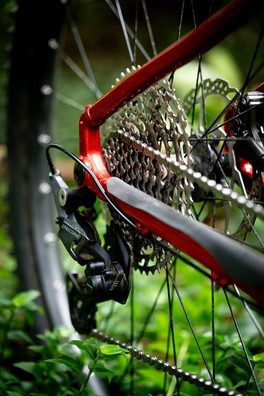
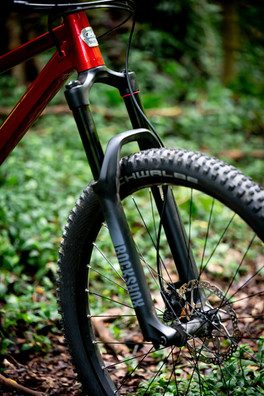
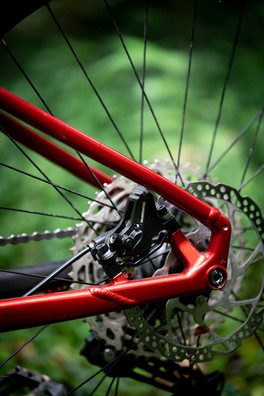
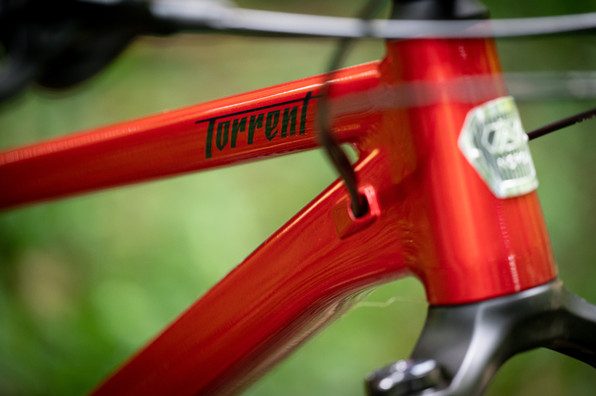
The Torrent is rolling on Stans Flow D 29” rims, (pre-taped, and with Stan’s valves and sealant in the box we got this rolling tubeless in about 10 minutes) with Schwalbe Hans Dampf rubber. In the drivetrain, the Torrent gets the value oriented new Deore 12 speed 10-51 1x drivetrain. And lastly, keeping things under control, are the Shimano 4-pot 420 brakes. You also get a Trans-X 150mm dropper and a Fizik Taiga saddle all for $2999.
After a relatively simple build, it was out into the streets for a quick rolling check and feel. Instantly, the thing that popped out to me was how similar to my last long travel full suspension bike this Norco felt in terms of overall position in the cockpit. Nice wide 800mm bars, and that visual cue of where the front wheel sits out in front of the stem - it all felt like it was trying to mirror the experience of a long travel full suspension bike in terms of rider body position. A great start!
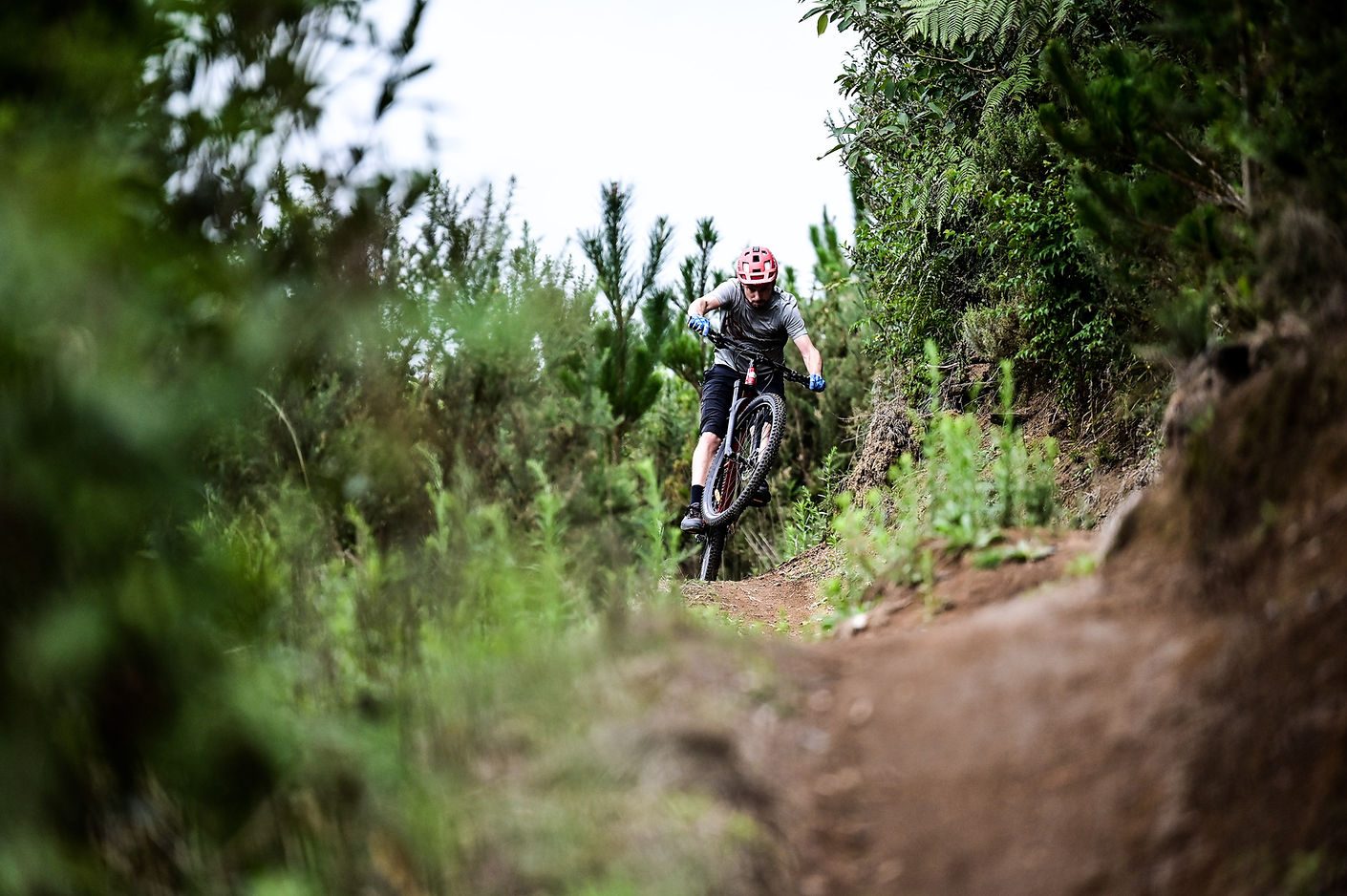
Out on the trail and the thing that hardtails beg you to do is get up out of the saddle and sprint. Every little climb, every little straight, you know that any effort you put in is rewarded with instant acceleration. Caution, you may start referring to your full-suss bikes with phrases like ‘Mr Blobby’ or other such names, because this thing just wants to go. But any hardtail can say that. The thing with the Torrent, is that it wants to keep going faster when the trail turns down. If you’ve moved from an XC oriented hardtail to a more trail oriented full suss (a pretty normal progression in bike ownership) you might not be aware how much geometry and tyre choice factored into the feeling of confidence that your new long travel bike has given you. That’s what the Torrent has tapped into here. All those things that make modern full suspension bikes great, but in a hardtail package. So, when the trail turns a bit techy, gets a bit of flow, or you see a few jumps, whoops, opportunities to manual etc, you don’t for a moment think “darn I wish I was on my full suss bike so I could enjoy this bit of trail” - you just rad on through it!
Of course, there are limitations to this. Firstly, decent size jumps. No matter how good your technique is, unless you are riding perfectly sculpted dirt jumps, you’ll still be coming back down to earth with a fairly decent impact on a hardtail. There is no way to avoid this, but good technique can make it the best version of what it is - you and a hunk of metal hitting the earth at 30 km/hr. On the plus side, knowing this is imminent, and also knowing you’ve got new abilities to accelerate quickly as you approach the takeoff, you might actually find yourself clearing jumps you didn’t before, and focusing more on your actual jumping technique. For better or worse, this bike won’t hide anything. If you can jump well, you will jump well on the Torrent, if you can’t - and you need your squish to cover your poor technique or habit of always landing on the knuckle - the Torrent won’t save your ass from your poor technique.
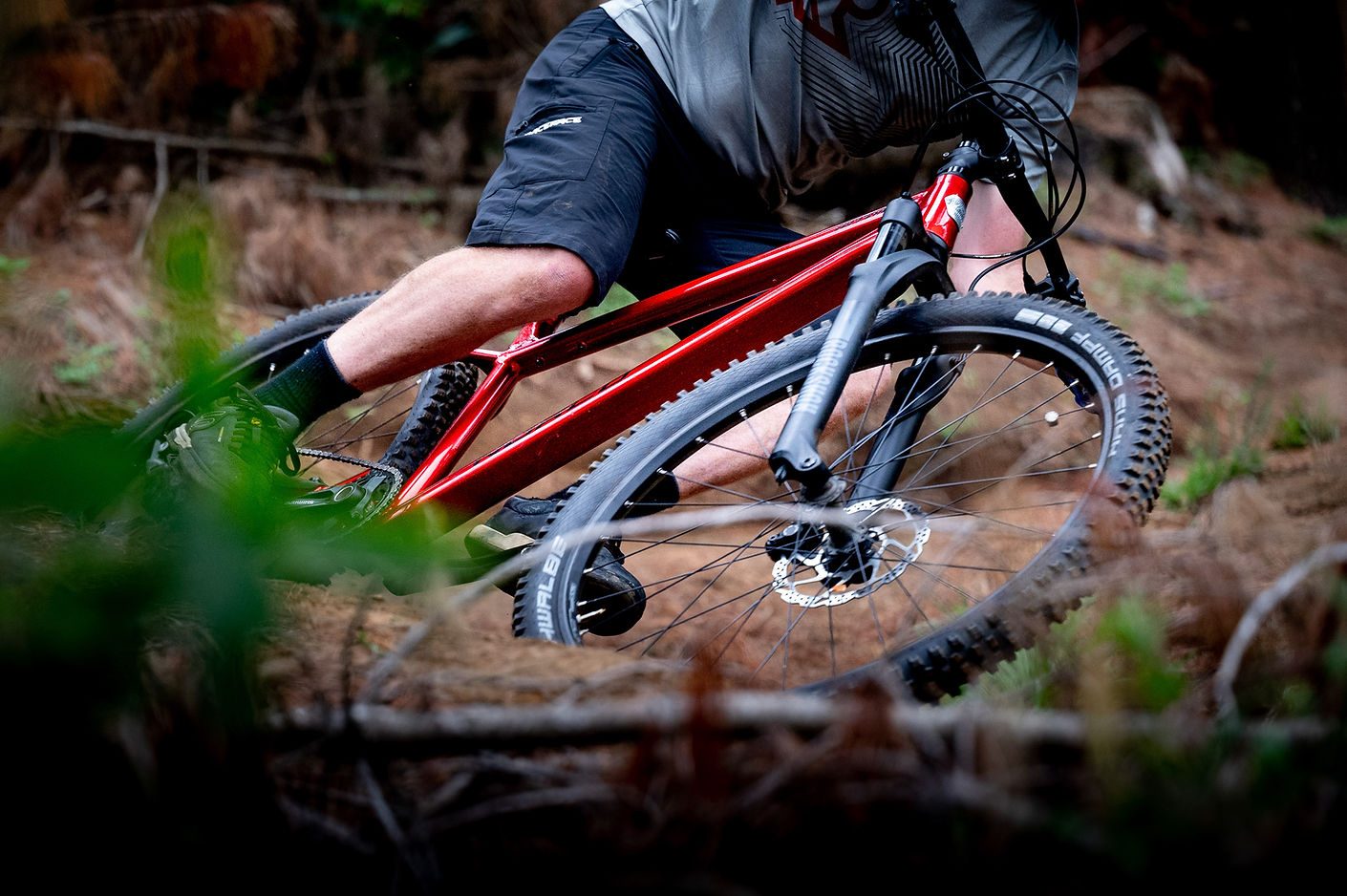
But the sweet spot for the Torrent is surprisingly large. On singletrack that isn’t insanely rough, has twists and turns and built in flow, you’ll be surprised just how good it feels. In fact, if you know how to pump, you’ll be reminded of just what you give up by going to a full suss bike in this area. A flowy singletrack trail with lots of rolling undulations and opportunities to make speed through pumping is what this bike was made for, and you’ll be surprised just how fast you might find yourself going as you use the trail to create speed - and that is a real smile inducing way to ride.
We would love to test the steel frame version to see if we could really ‘feel’ the fabled compliance of steel vs alloy, but the reality is the 150mm of suspension and chunky tires are going to absorb most of that, so it might be hard to argue for the steel option based on performance. However, we also know steel bikes are just their own version of sexy - and you’ll get extra street cred to boot - but alongside that, they also have great qualities in terms of fatigue resistance (think of all the big hits you’re giving this thing!) so, in saying that, for an extra $300 the entry level steel model might just be our pick of the bunch.
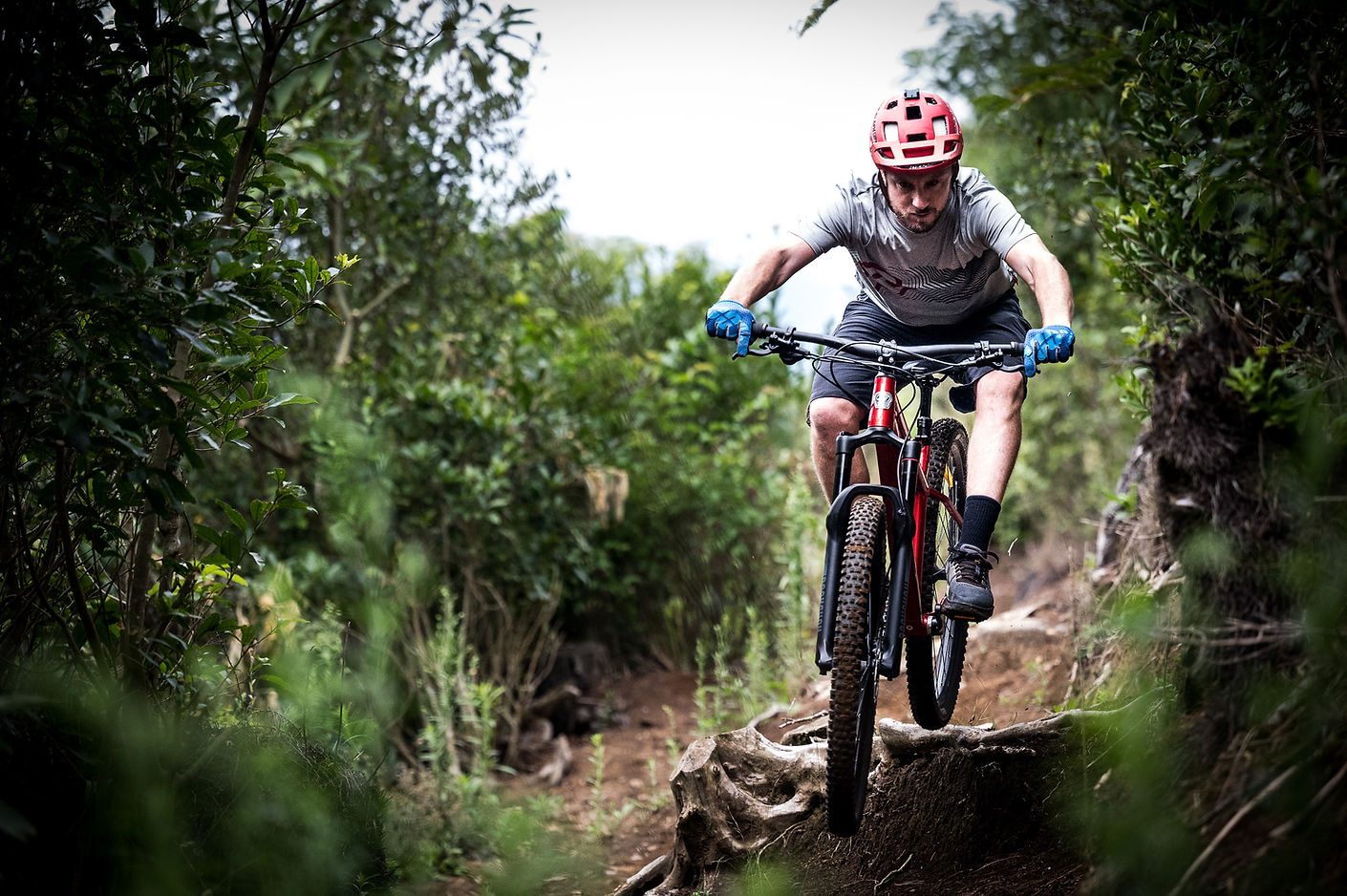
Despite being impressed overall, there were a few minor things that didn’t quite work out. The internal cable routing rattled, the Fizik seat just didn’t seem to fit our bottom shape, and though thin grips seem all the rage, these ones seemed just a bit too thin and were really just kind of hard. Those are all pretty minor changes though.
The spec on the A1 model we tested was the no frills option, and that helps keep the price under $3k, but it doesn’t mean there is a lot we’d change. In fact, the 12 speed Deore groupset is sublime. You also get Shimano hubs as opposed to some non-branded cost saving option, and the Stans rims held up well to the abuse we put them through. The 420 Shimano 4-pot brakes don't have quite the same refined lever shape or overall shininess of their higher priced siblings, but they don’t lack for power either. When you need to drop the anchors, they do the job just fine. Speaking of the jumps and drops you’ll be wanting to do on this, it’s when you start to trust the geometry and ride with more and more confidence that you also realise the limitations of the 35 Gold fork. It doesn’t have the damping refinements of it’s more expensive brethren such as the Pike or Lyrik, which is a shame as you have to go all the way up to the $4499 top spec model to get a better fork. It’s not that the fork isn’t up to handling itself with big hits, it's just that it's a simpler damping system all together. This means that to get the sensitivity on the small impacts you lose some of the control at managing the big impacts, which is a shame, as getting rowdy is what this bike is built for. Of course, the simple solution is; if you’re focusing on riding rowdy, set it up accordingly and it will take care of you just fine. Switching out a fork isn’t as easy as switching out the grips, but if this bike had something like a Pike on it, we think it would have been a home run.
All in all, the Norco Torrent is an impressively fun bike to ride, with a solid component package that will impress you with just what modern hardtails are really capable of. It’s not for the dirt jumpers nor the hucksters, it’s a trail bike that will go anywhere and everywhere and make you wonder why you’ve been carrying that saggy rear shock around with you for so long.
Distributed by Advanced Traders | RRP: $2,899
Words: Lance Pilbrow
Images: Julia Moore-Pilbrow
Review: Giro Ventana Women's FastLace Shoe
It had been a while since I’d ridden my MTB. Throw in shoulder surgery rehabilitation and COVID, and you have exactly six months. Needless to say, I needed all the flare and sparkle a new pair of shoes could bring me. ‘This ain’t gonna be pretty’, I thought to myself as we ran the gauntlet that is South Auckland traffic, and escaped to Whakarewarewa, Rotorua. Pooch, hubby, bike, not to mention the new kicks – sorted!
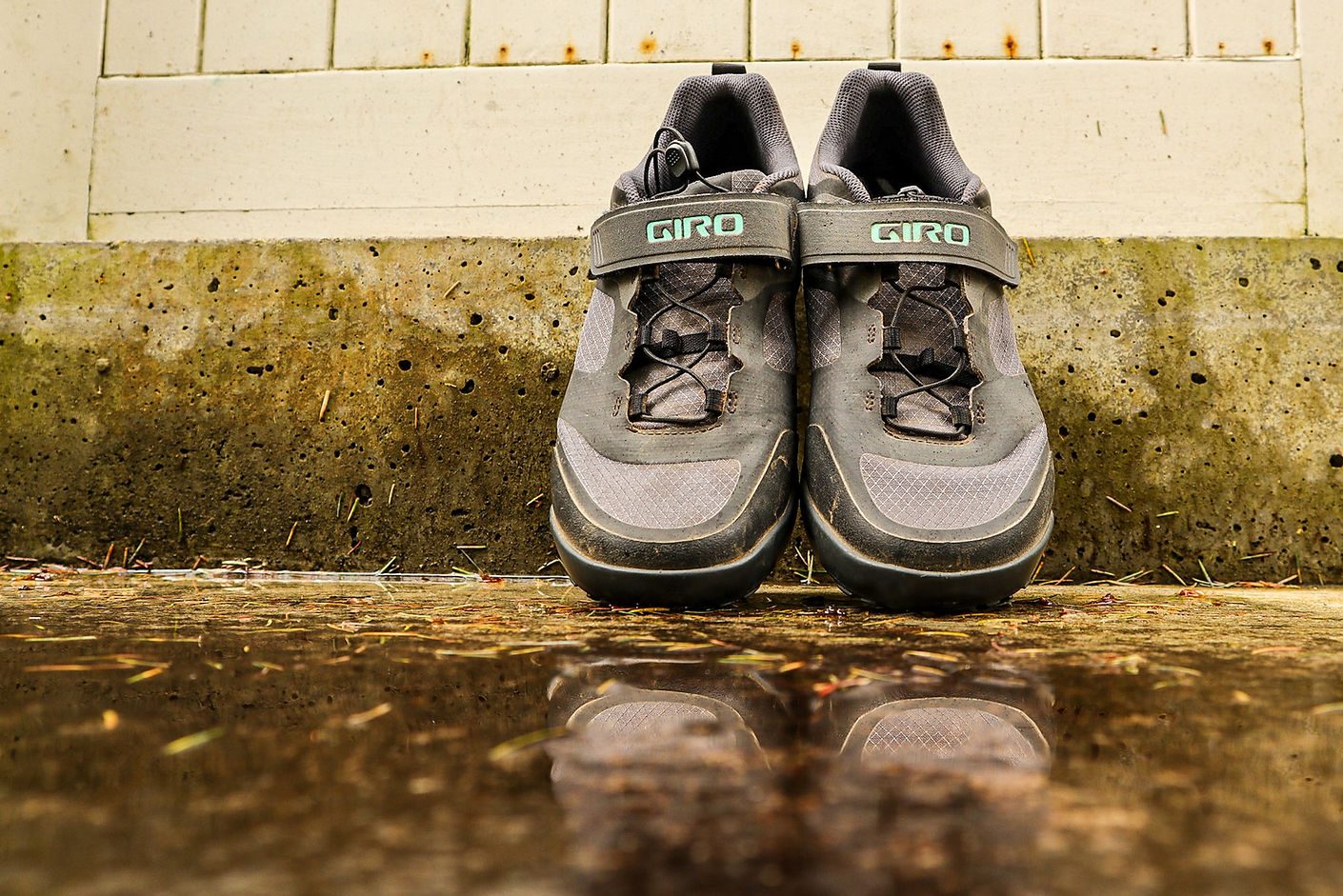
With my head full of noise about how my shoulder was going to hold up, I didn’t need foot drama added to the mix – so I was literally comforted with the secure, snug fit when I first got into the shoes. These shoes gave me the support and responsiveness of a more rigid XC shoe, with the comfort you need when having to do a bit of hiker-bike. After a lot of time working from home in my Ugg boots, my feet were happy with a bit of cushion and support provided by the moulded Eva footbed.
We gave the pooch a bit of a run around before we headed out onto the trails, at the great dog park on Long Mile. Being out of my usual rhythm a bit, I had forgotten to bring dog walking shoes, so ended up walking the pooch pre-ride in my new MTB shoes. Now that’s one way to wear them in – no issues at all I must add – impressive!
By the time we headed out onto the trails it was still pretty fresh and my hands were still cold. This is where the Fastlace system came into its own; with minimal effort I was able to pull the laces tight with the pull cord and lock them into place, creating a super snug fit. The laces could then be easily tucked away behind the Velcro strap across my ankle. Like any good Rotorua day, the weather heated up pretty nicely out on the trails. This lace system allowed simple easing off of the tension as my feet got a bit warmer and needed a bit more space.
On a couple of techy parts on the trails, I lost my nerve a bit and needed to dismount and scoot myself and the bike down a tricky downhill section. I was really confident in the Ventana, they gave me great grip as I edged my way down the drop off (‘next time I’ll nail it!’). Like many other readers, I’m sure, I am pretty hard on my shoes – let’s blame it on our genes. Riding the trails that day, I felt confident in the durability of these shoes. It must be something to do with the Giro Sensor Rubber and Synchwire feature on the outer part of the shoe, which says: ‘Show me the roughest terrain – no matter what, I’ve got you’. These shoes tell me they will go the extra mile and more.
This shoe has that effortless flat kick look, can step up to the starting plate for a speed effort or could go all day - and the next - with minimal impact. What’s more, they can transition from the trails into the local Te Arawa Seafood store for some fresh scallops (shout out to Te Arawa Seafoods!) with ease.
Distributed by Worralls | RRP: $229
Reviewed by Philppa Friary
Review: Pirelli Scorpion eMTB Tyres
A lot of new players are entering the mountain bike tyre market of late, bolstering the choices we have in a sector that has been dominated by one or two brands for many years. The names coming in though are not unrecognisable, and have plenty of experience in the rubber game in auto and moto applications, and are applying that knowledge to their mtb offerings. Pirelli, the Italian brand steeped in racing history across all forms, have thrown their hat in the ring and the Scorpion series is their flagship tyre for aggressive trail riding, enduro racing and e-mtb. After some of our testers had put in time on the Scorpions on regular mtbs, I got hold of the E version for some boosted riding.
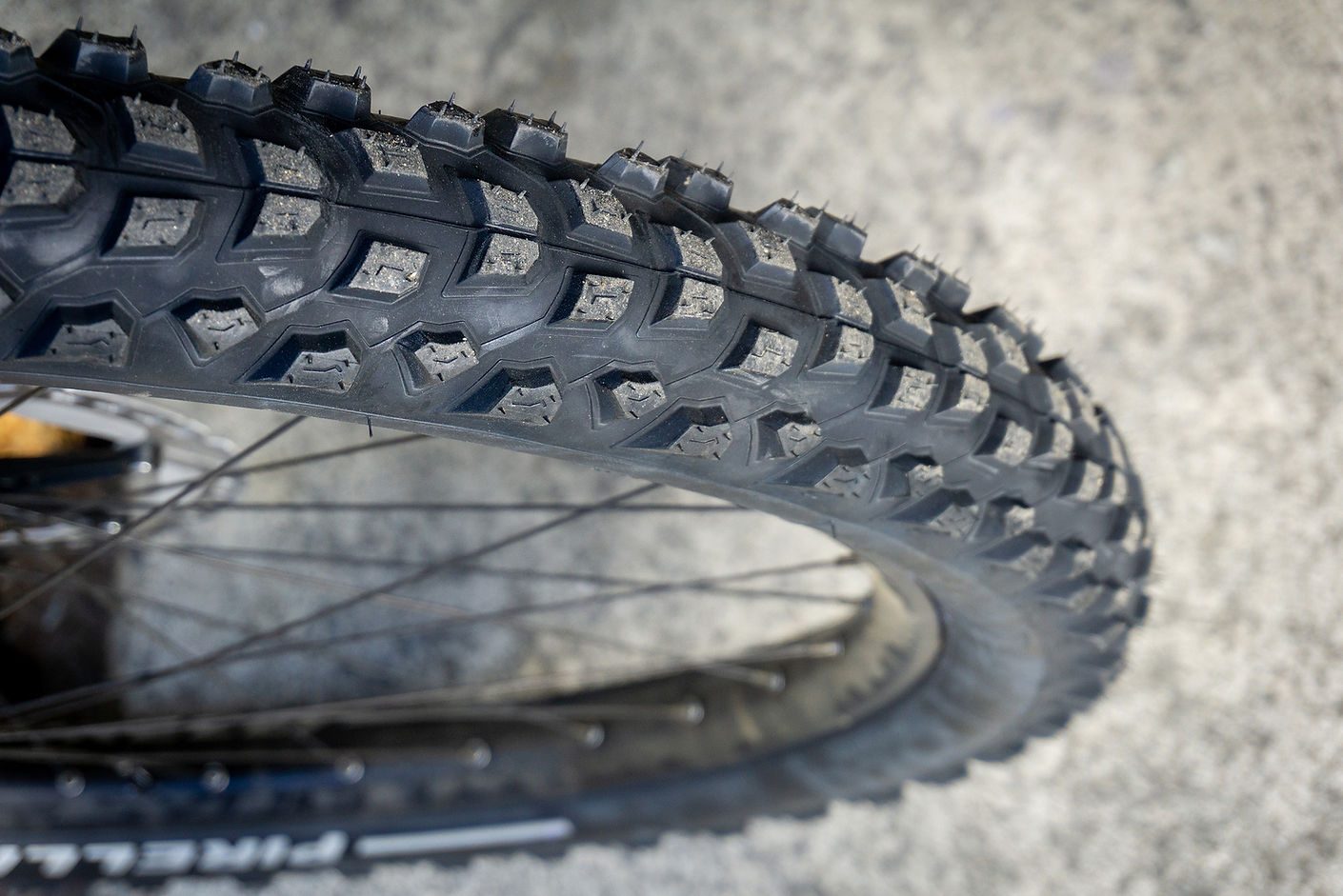
Emtbs have particular requirements when it comes to tyres, namely large volume, chunky treads and sturdier casings. The Scorpions come with a thick sidewall dubbed Hyper Wall, that isn't really explained beyond that on their website. Whatever they've done works, as I dropped pressures as low as 15PSI, with the sidewalls still feeling solid and without any squirm whatsoever under hard cornering. The front 2.6 EMTB-S tyre has massive knobs spaced well apart, and the side knobs take the bite factor to the next level with their size and toothy profile digging into anything from loose over hardpack to mud and slimey rocks. Just looking down and seeing that big boy leading the way instils some false bravado, and when you get a bit carried away with the speed it'll quickly step in to correct things as you try to wrestle the bike back on line.
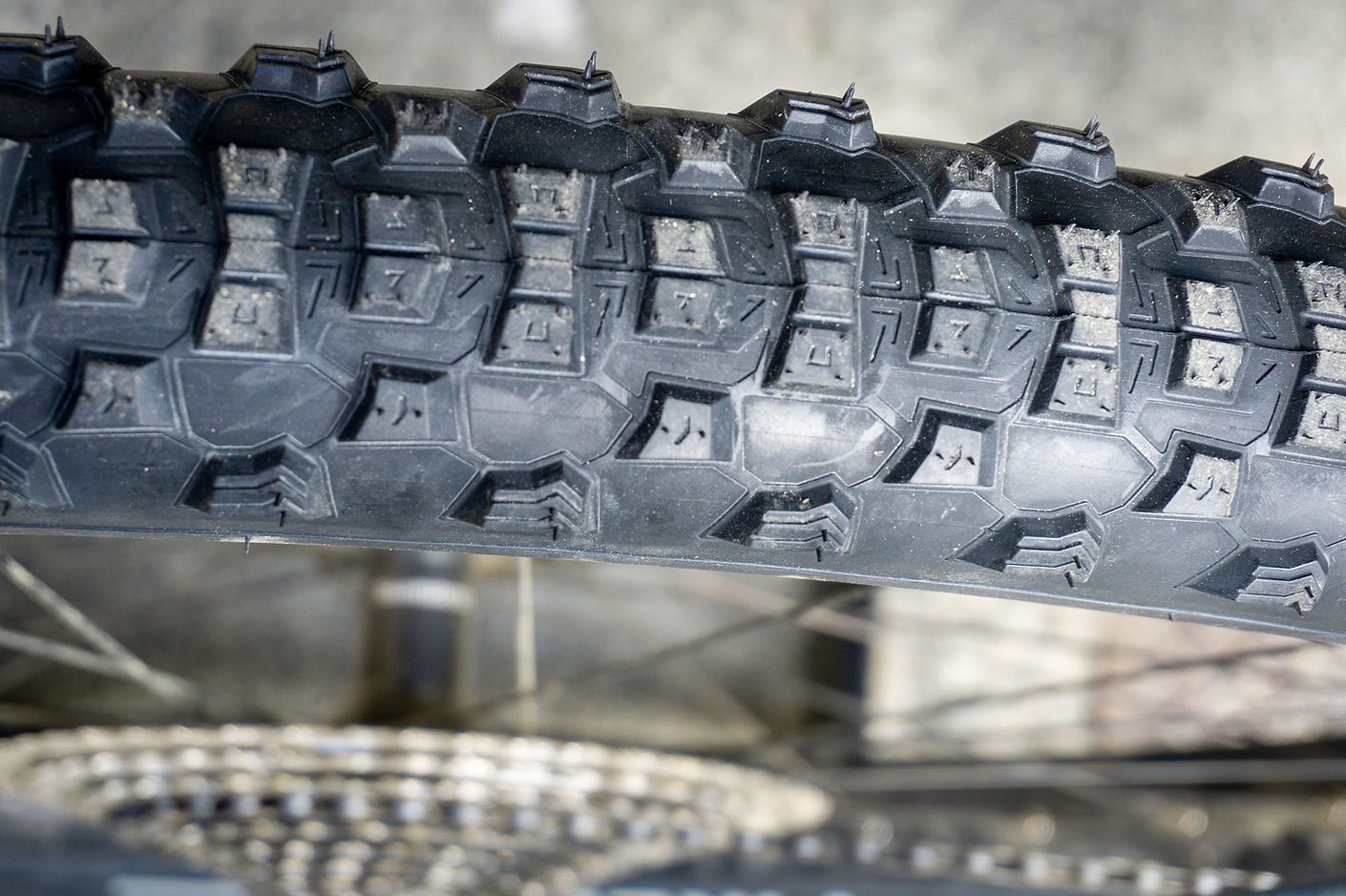
Out back there's the EMTB-R, with the same 2.6 Hyper Wall casing and Smart Grip compound (another Italian mystery that uses something called Lignin, look it up) but in a way less aggressive rear tread pattern. Tighter spaced knobs in the centre help with braking and more importantly traction, especially important if you're one to take on steep technical ups as well as downs. Wheelspin even on rutted out goat racks was negligible until the gradient got too much more for the rider than the bike. Smaller side knobs make it easy to drift the rear wheel as far as you like in corners, knowing that when you want some grip it'll be there. To say the Scorpions changed the way my bike rode would only be half the story, as the confidence they give changed the way I rode the bike too.
The set-up was painless and the tyres have held air well between rides. After around 100km of trail riding and a sniff of tar, the knobs are holding up well and look like they'll be around for a long time, as well as a hell of a gripping good time.
Distributed by FE Sports | RRP: $137


